English Elysium: Country Houses of Shropshire
Cottesbrooke Hall, Weston Park & Millichope Park
In May of 2019 our fun-loving group boarded a luxury coach in London and headed for Shropshire, sometimes called “God’s Own County.” We broke our journey in Northamptonshire, where we stopped for lunch at the sublime Cottesbrooke Hall. Reputedly the inspiration for Jane Austen’s Mansfield Park, the lovely red brick Cottesbrooke is a near-perfect example of Queen Anne architecture. With the exception of some minor changes, the house has remained virtually unchanged since it was built in the early 18th century. After lunch Alastair Macdonald-Buchanan gave us an intimate tour of his family’s art-filled home, which includes one of the finest collections of sporting paintings in the world. We also saw the family’s important collection of furniture, including excellent 18th century English and French pieces, as well as English, continental, and Chinese porcelain. After the tour ended Alastair gave us a tour of his astounding garden, which won the Historic Houses Association/Christie’s Garden of the Year Award in 2000.
Next it was on to our home for the next week: Weston Park, one of the grandest, yet most intimate, country houses in England. This historic home of the earls of Bradford is set in 1,000 acres of Capability Brown-designed parkland dotted with follies, temples, and lakes. After we unpacked and settled into our rooms, we met the divine Gareth Williams, our tour leader, for drinks in the library. Gareth, Shropshire expert extraordinaire and curator at Weston Park, knows everybody and every house of note in this large county (Shropshire, often abbreviated as Salop, is the largest inland county in England). The jaw-dropping collection at Weston spans almost every type of fine and decorative art, boasting paintings by Holbein the Younger, Thomas Gainsborough, Joshua Reynolds, George Stubbs, and Anthony van Dyck (there are six van Dycks in the dining room). The family patronized Thomas Chippendale, so it’s no surprise that his sensational chairs line the walls of the entrance hall surrounded by Chinese and Japanese porcelain, in addition to pieces by Derby, Worcester, Wedgwood, and Coalport. Weston also has a very rare gem: a quiet room that is hung with a superb set of 1760s Gobelins tapestries based on the theme of the love of the gods (they are extremely similar to the Gobelins tapestries from Croome Court, today in the collection of the Metropolitan Museum, but in better condition and more brilliant than the Met’s).
It’s safe to say that our visit to Millichope Park knocked everybody’s socks off. The 1835-40 Ionic Greek Revival house, built of crisp local stone, sits Parthenon-like on a hill above a lake, a Grecian visage that sometimes seems to float in the clouds. This little known house, never open to the public, is one of Shropshire’s gems. The young owners, Frank and Toni Bury, threw open their entire house to us, leading us from one breathtaking room to another (the entrance hall alone, especially the chandelier, defies description). After time to digest the house, we had drinks on the sun-drenched terrace, followed by a walk through the garden, ending with a visit to the 1770 Ionic temple. Pure magic.
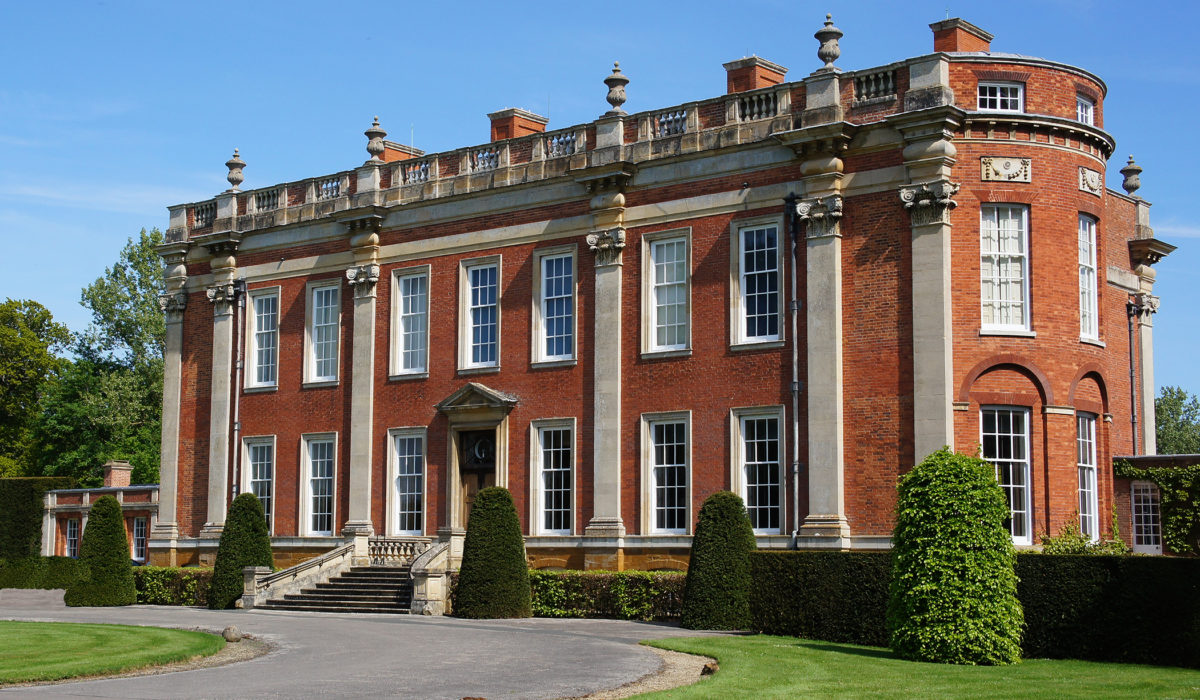
Cottesbrooke Hall | Photo by Curt DiCamillo
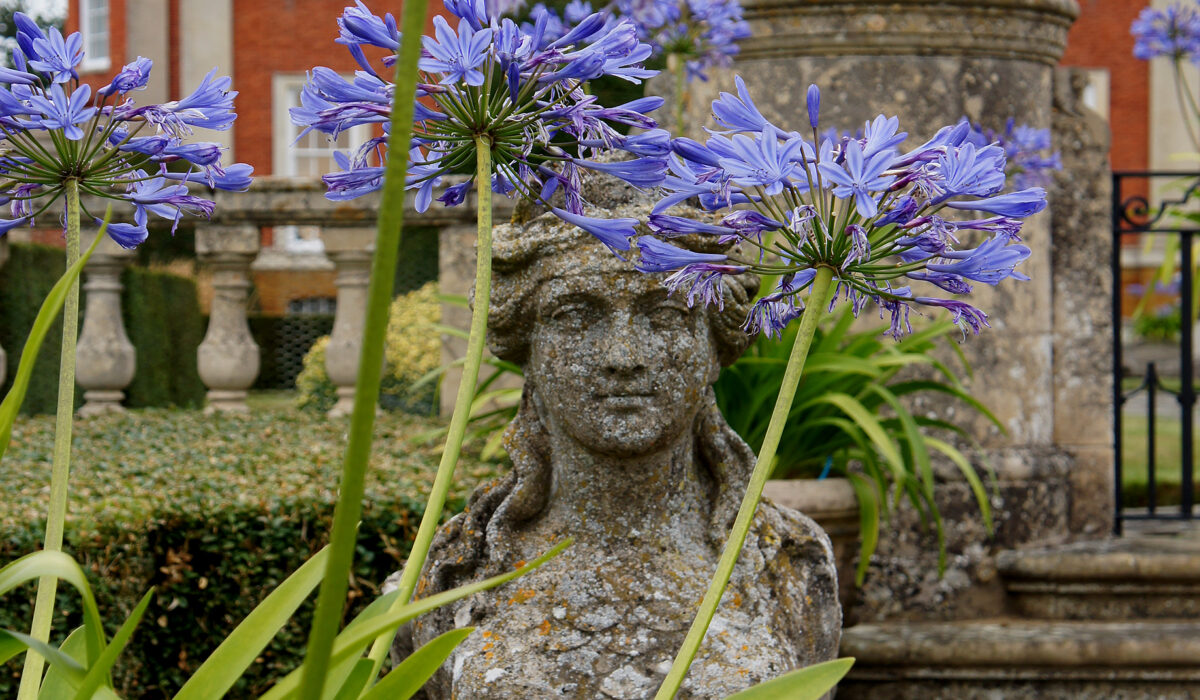
Cottesbrooke Hall | Photo by Curt DiCamillo
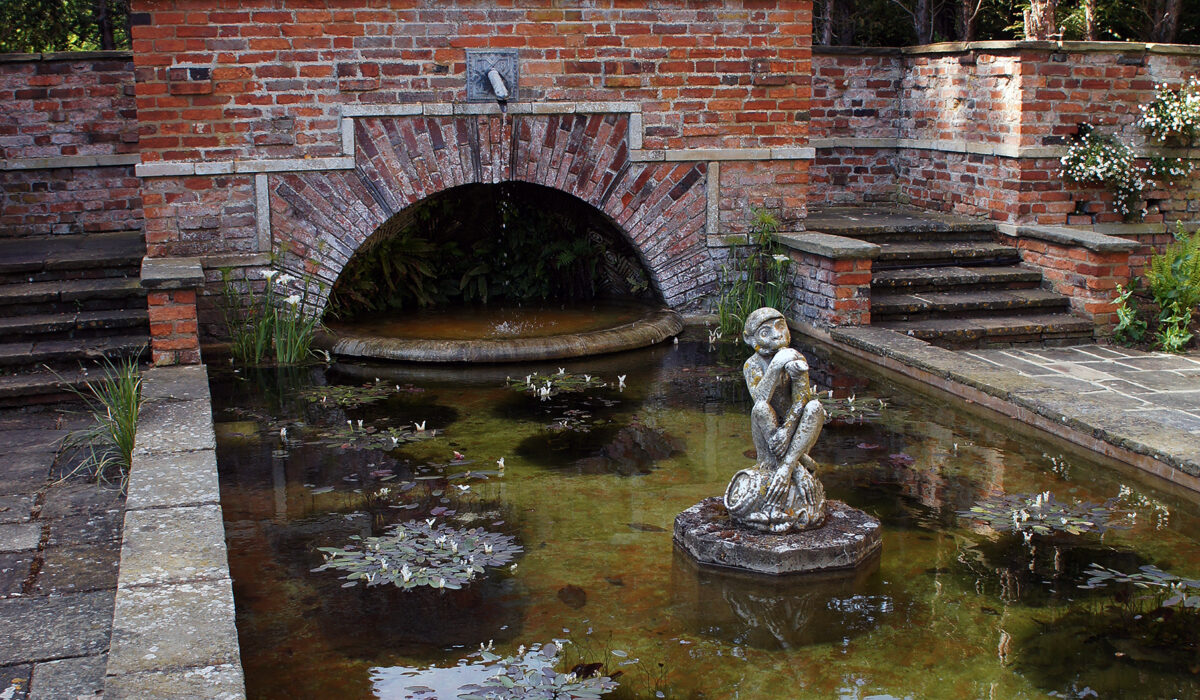
The Cottesbrooke Garden | Photo by Curt DiCamillo
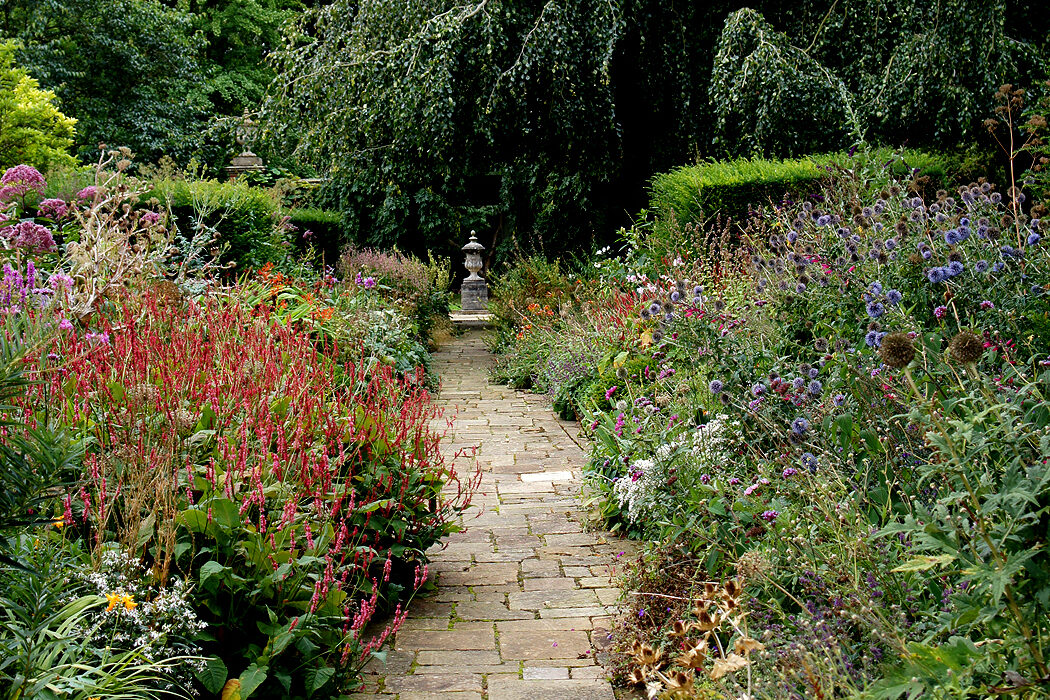
The Cottesbrooke Garden | Photo by Curt DiCamillo
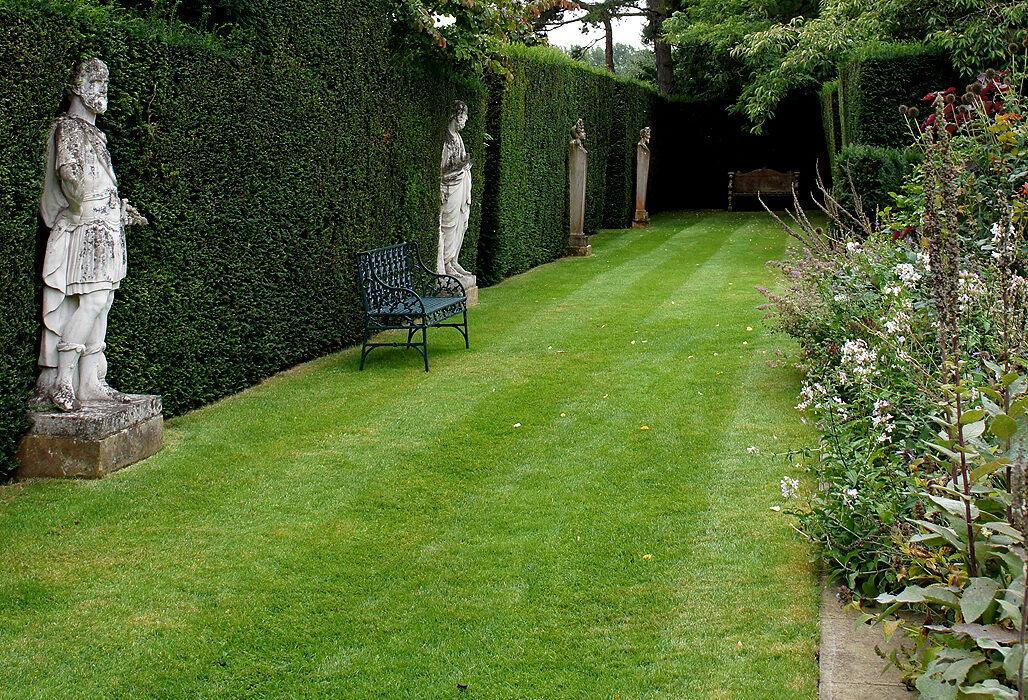
The Cottesbrooke Garden | Photo by Curt DiCamillo
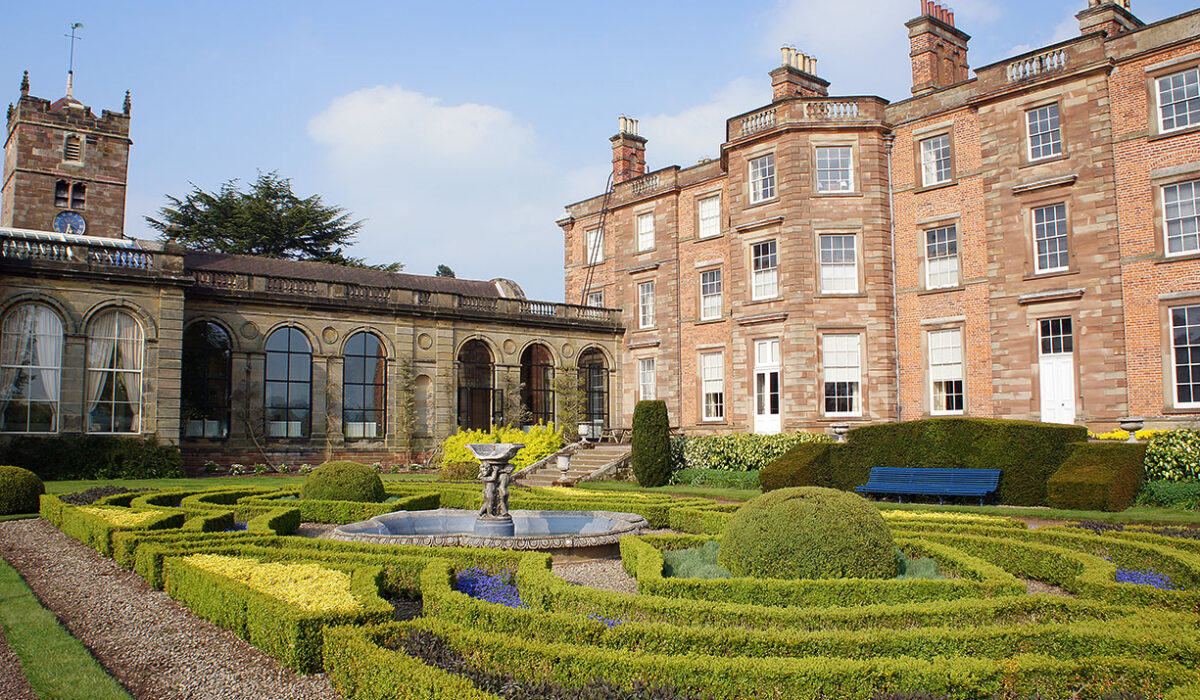
St. Andrew's Church, the Orangery Garden, and the House, Weston Park | Photo by Curt DiCamillo
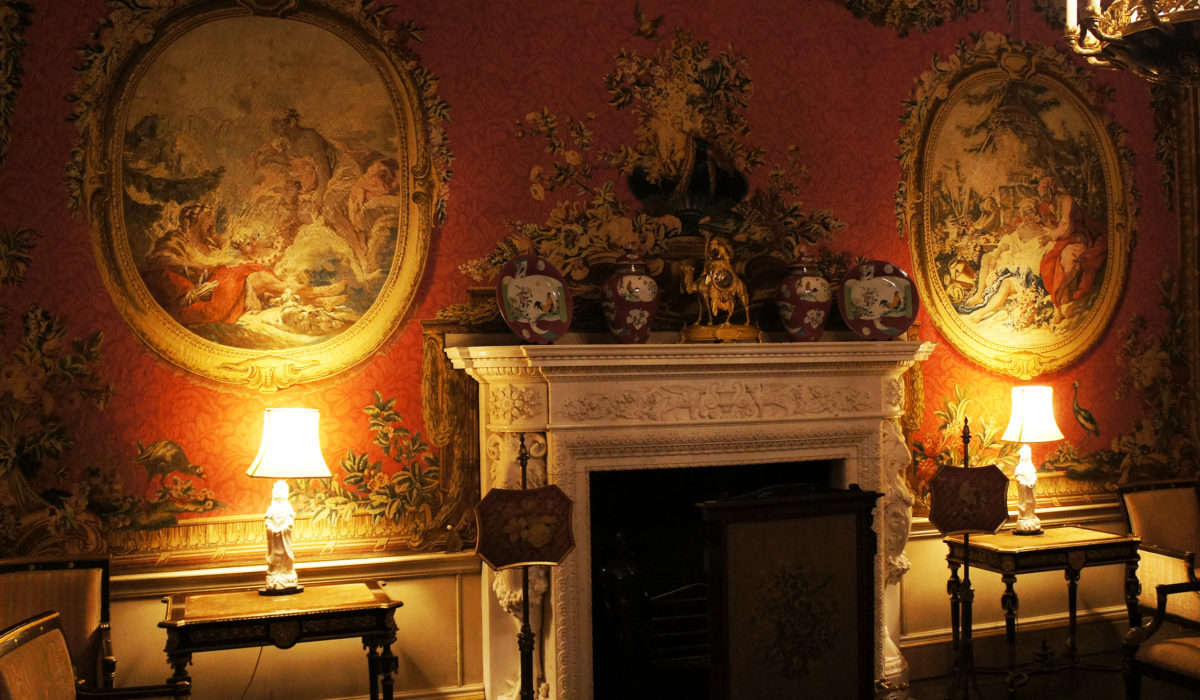
The Tapestry Room, Weston Park | Photo by Curt DiCamillo
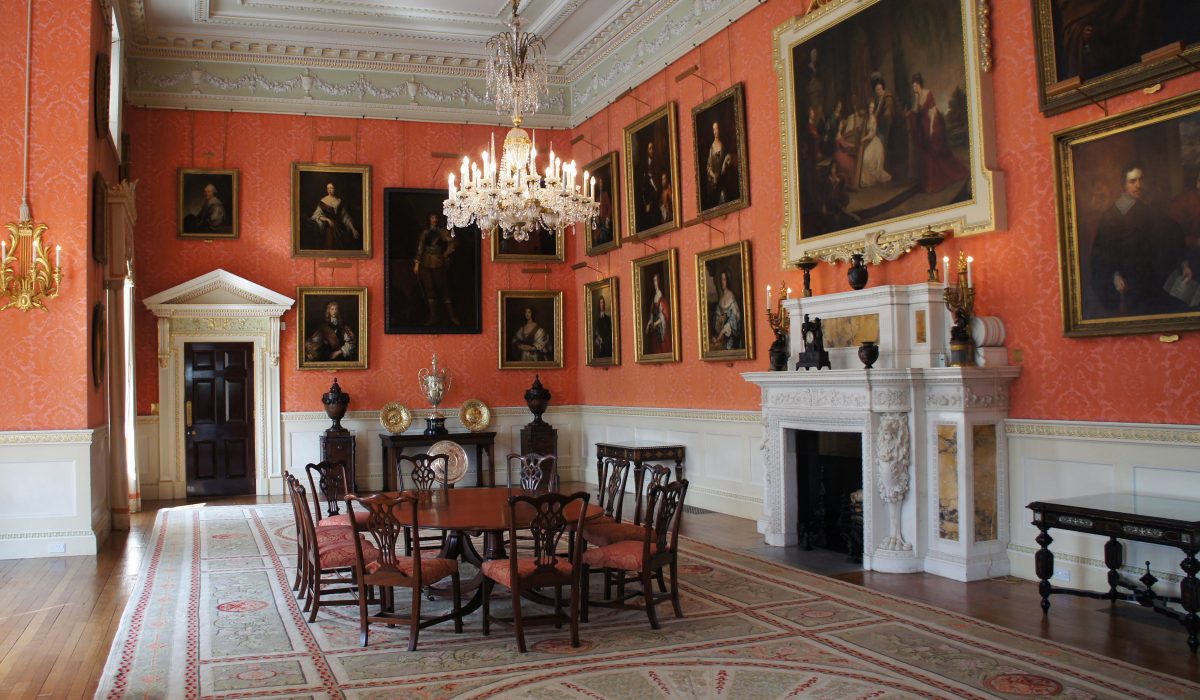
The Dining Room, Weston Park | Photo by Curt DiCamillo
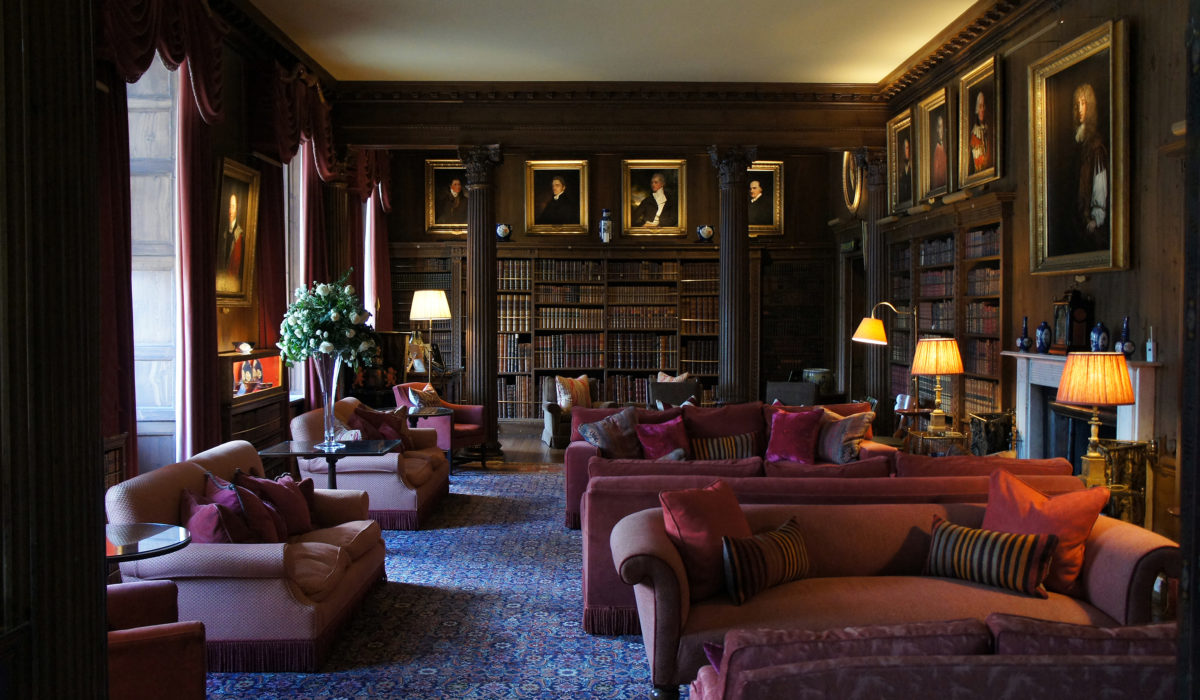
The Library, Weston Park | Photo by Curt DiCamillo
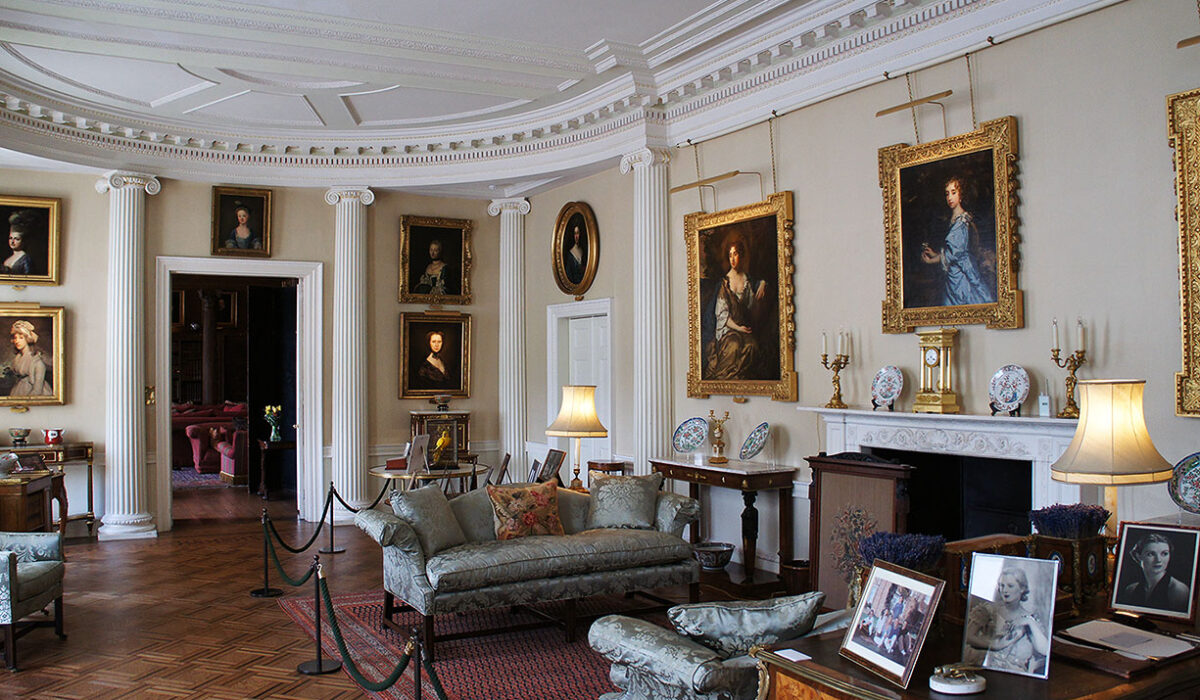
The Drawing Room, Weston Park | Photo by Curt DiCamillo
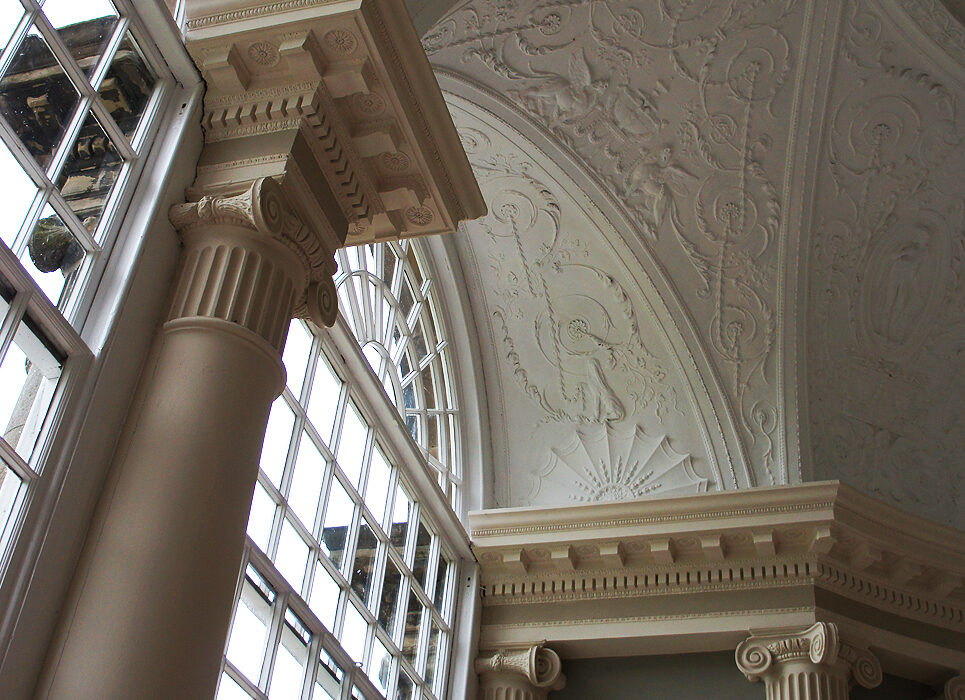
The Temple of Diana, Weston Park | Photo by Curt DiCamillo
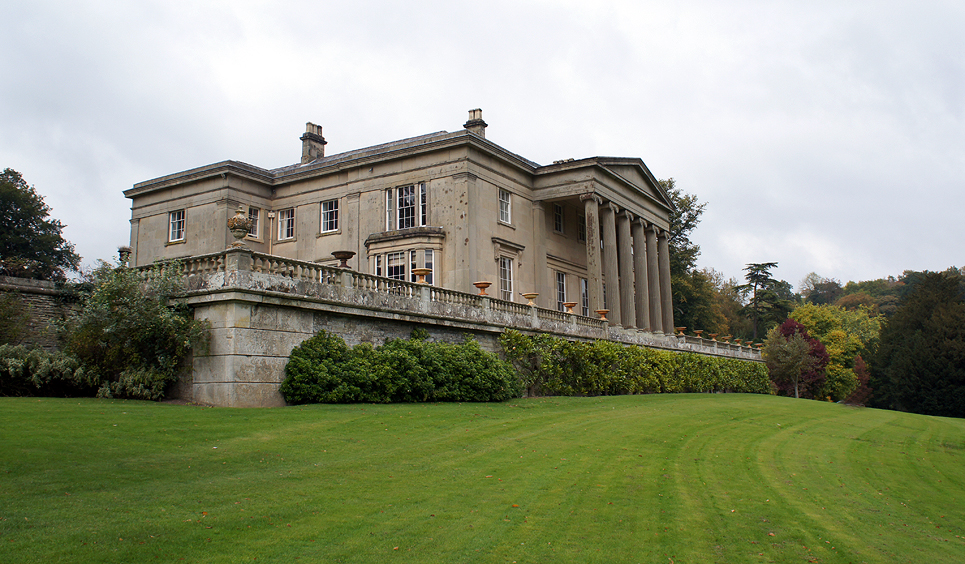
Millichope Park | Photo by Curt DiCamillo
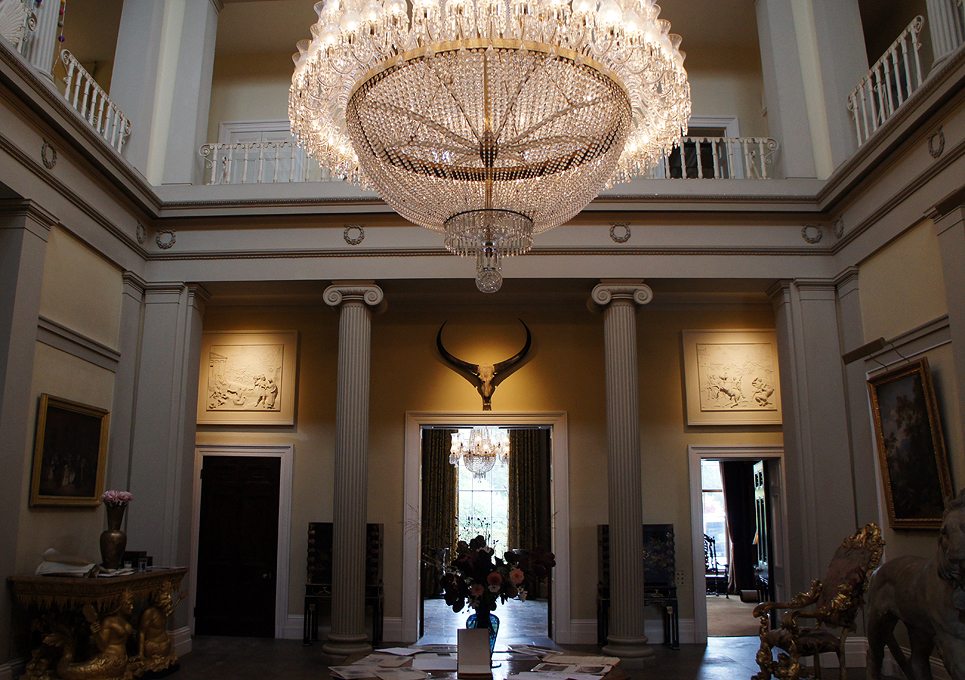
The Entrance Hall, Millichope Park | Photo by Curt DiCamillo
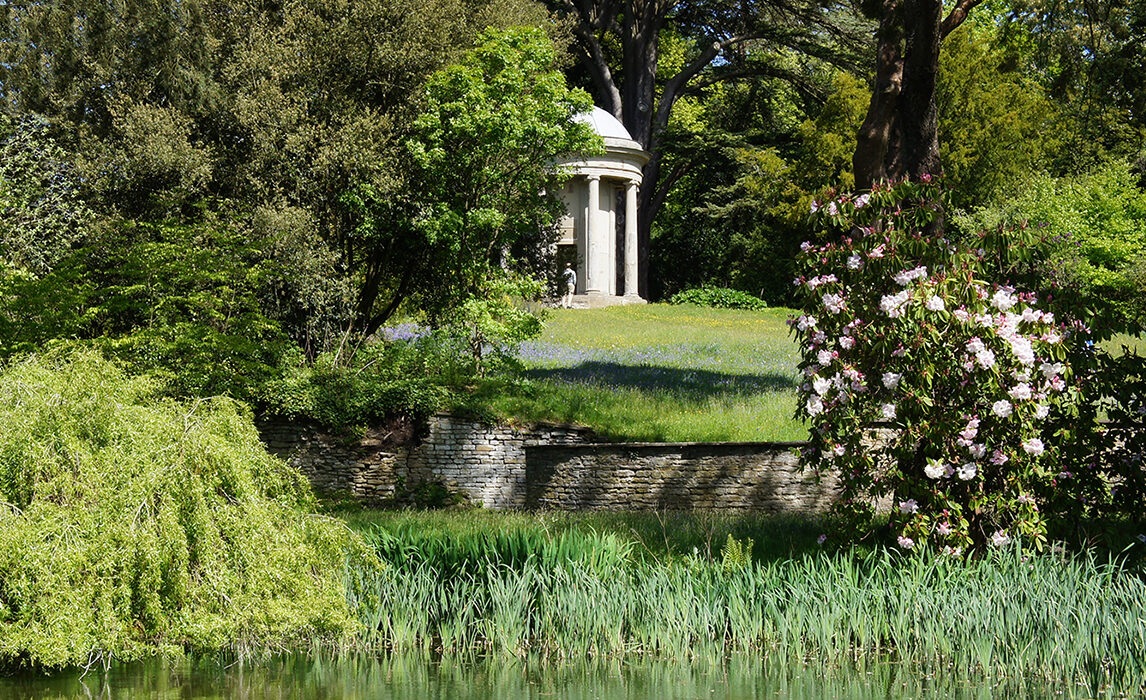
The Ionic Temple, Millichope Park | Photo by Curt DiCamillo
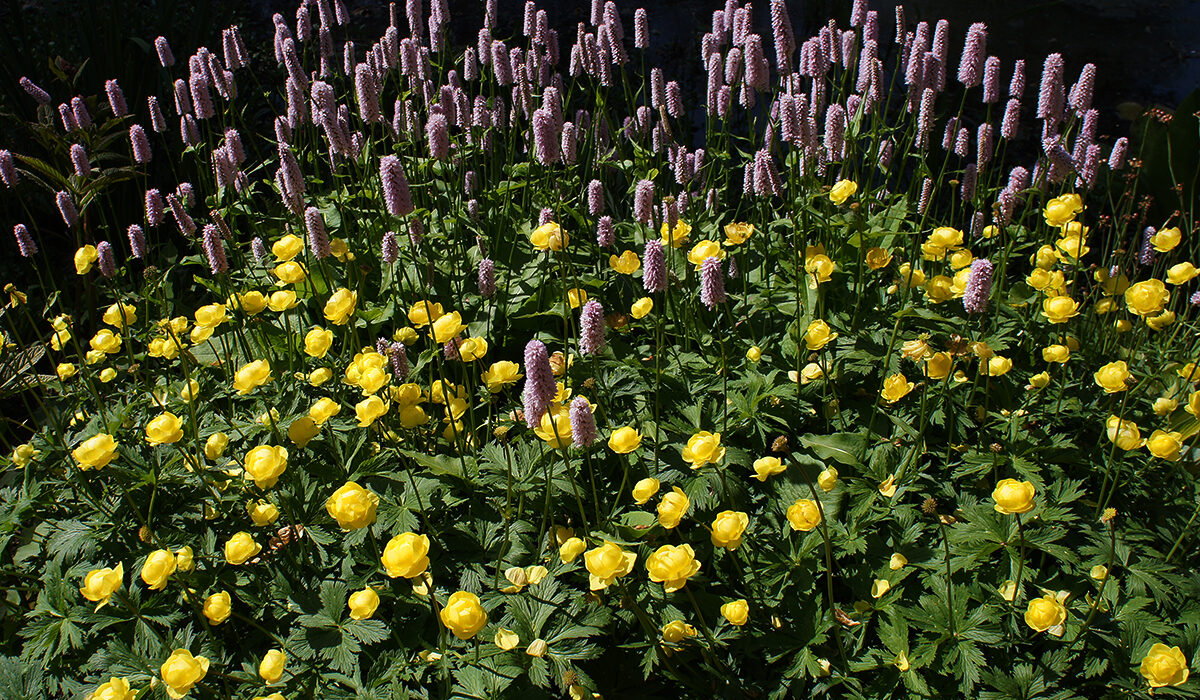
The Garden, Millichope Park | Photo by Curt DiCamillo
Stanley Hall, Burwarton Hall, Downton Hall & Cronkhill
At the charming 17th century Stanley Hall owners Michael and Clare Thompson hosted us for what might possibly have been the perfect homemade English country lunch. The red brick and timber-framed Stanley Hall may represent the beau ideal of an English country house. Set down in the middle of a heavily-forested park, the never-open-to-the-public house is filled with family heirlooms and endless coziness.
At Burwarton Hall Viscount and Viscountess Boyne welcomed us into their delightful garden, which was followed by a tour of their 19th century Italianate mansion, which is being carefully restored by the young couple. We ended our visit with tea and sweets hosted by Lord and Lady Boyne in the classical dining room. Burwarton Hall, large today, was once twice as big; in the mid-20th century, when sizable staffs were no longer required and country house living had changed considerably, an enormous part of the house was demolished. Sitting today in an estate of 11,500 acres, Burwarton Hall is positioned an extraordinary 780 feet above sea level (one of the highest country houses in Britain) and still forms the nucleus of a large, active agricultural estate.
It may not be an abbey, but the 18th century Downton Hall is a truly splendid Georgian house with breathtaking views to Titterstone Clee Hill. Here we were welcomed by owner Philippa Wiggin, who, with her husband Mark, have beautifully restored the house and garden. Philippa gave us a tour of the house, which is noted for its exceptional plasterwork and fine chimneypieces. We left Downton through the Greek Revival Pantheon-like entrance hall and walked out into brilliant sunshine, where we were enveloped by the garden and undulating hills beyond. It was hard to get back on the coach and leave this bit of paradise.
We had lunch at Cronkhill as the guests of Rupert Acton. Cronkhill, a building of international importance, was built in the early years of the 19th century as the home for the agent of the Attingham Estate, of which it remains a part today. The first and best-known example of John Nash’s Italianate villas, Cronkhill was designed to look like one of the Quattrocento Tuscan farmhouses depicted by Claude Lorraine or Poussin. The house has a somewhat unusual asymmetrical plan, with lovely views across the River Severn toward the Wrekin (a large, almost mountainous hill), which rises, Vesuvius-like, in the distance.
Stanley Hall | Photo by Curt DiCamillo
Weston Park is pure magic from dawn to dusk.
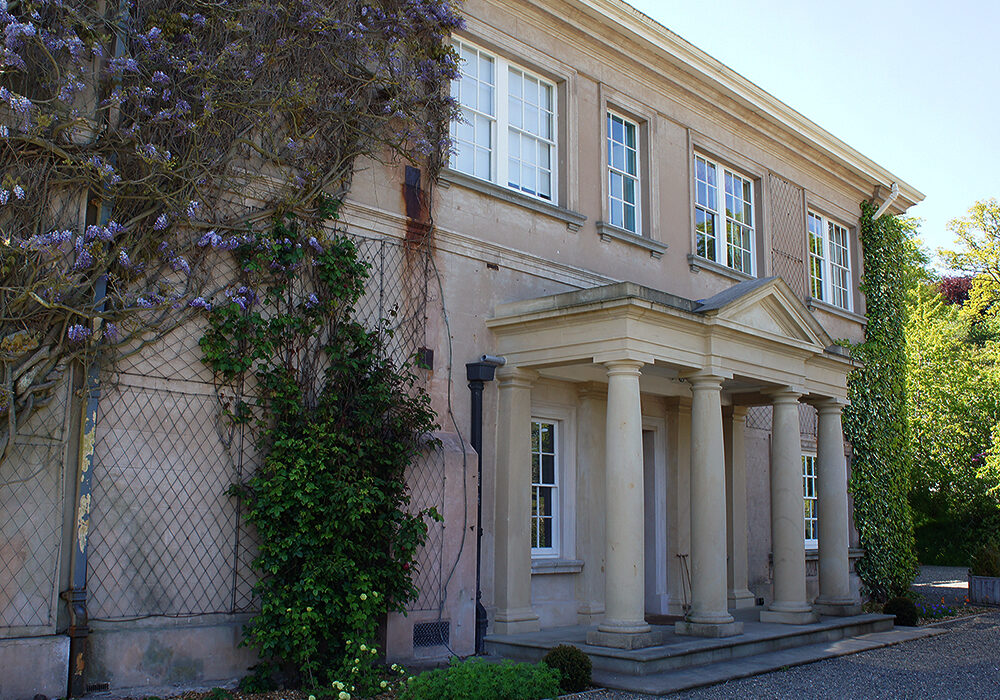
Burwarton Hall | Photo by Curt DiCamillo
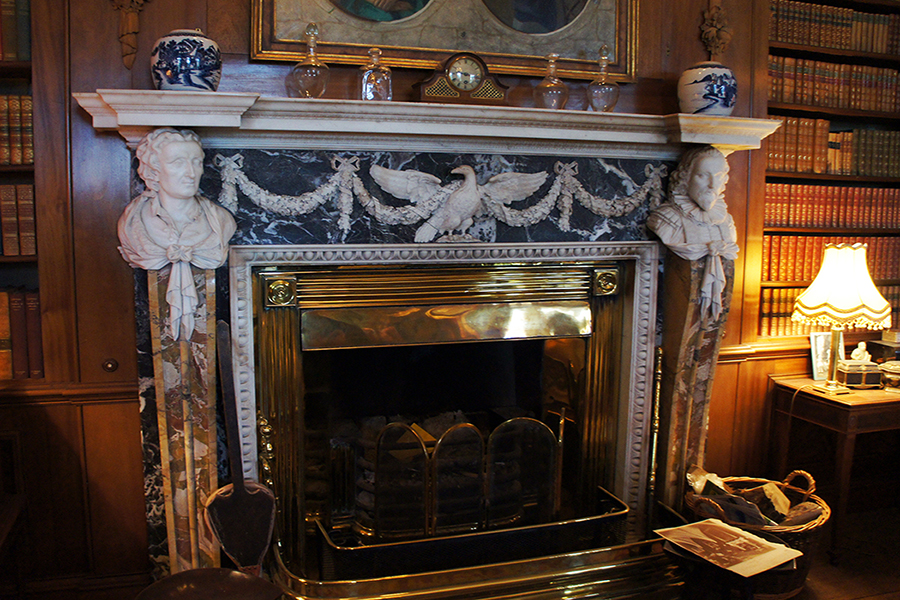
The Burwarton Hall Library Chimneypiece from Brancepeth Castle | Photo by Curt DiCamillo
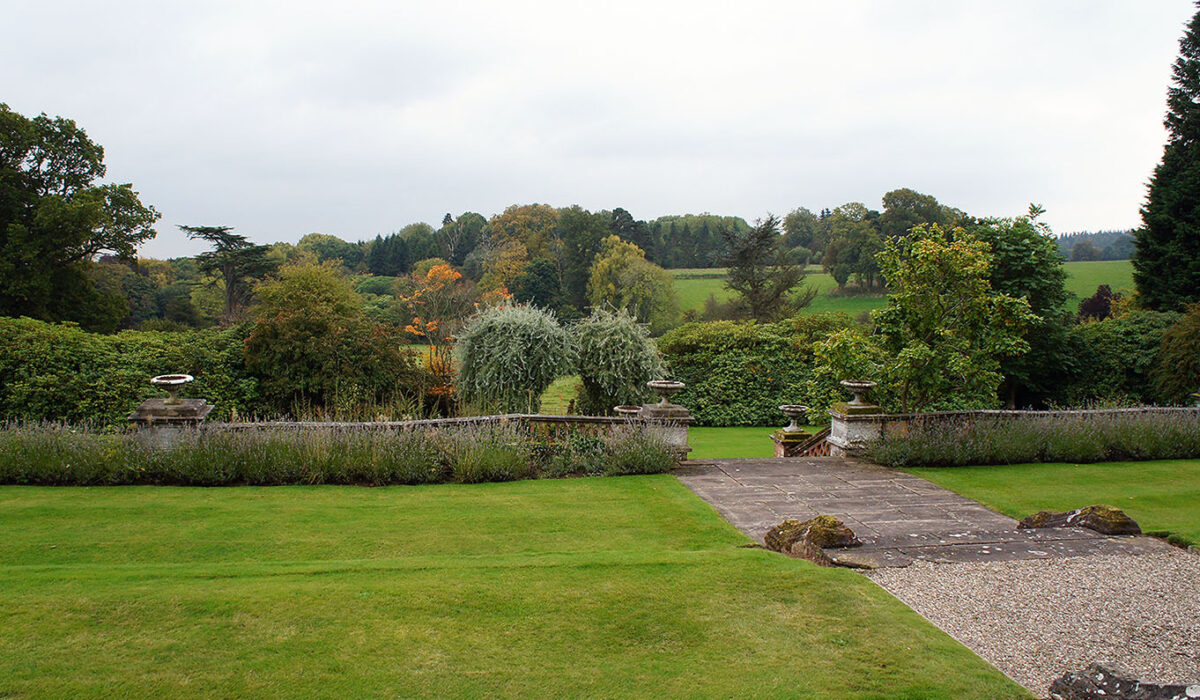
Burwarton Hall Garden | Photo by Curt DiCamillo
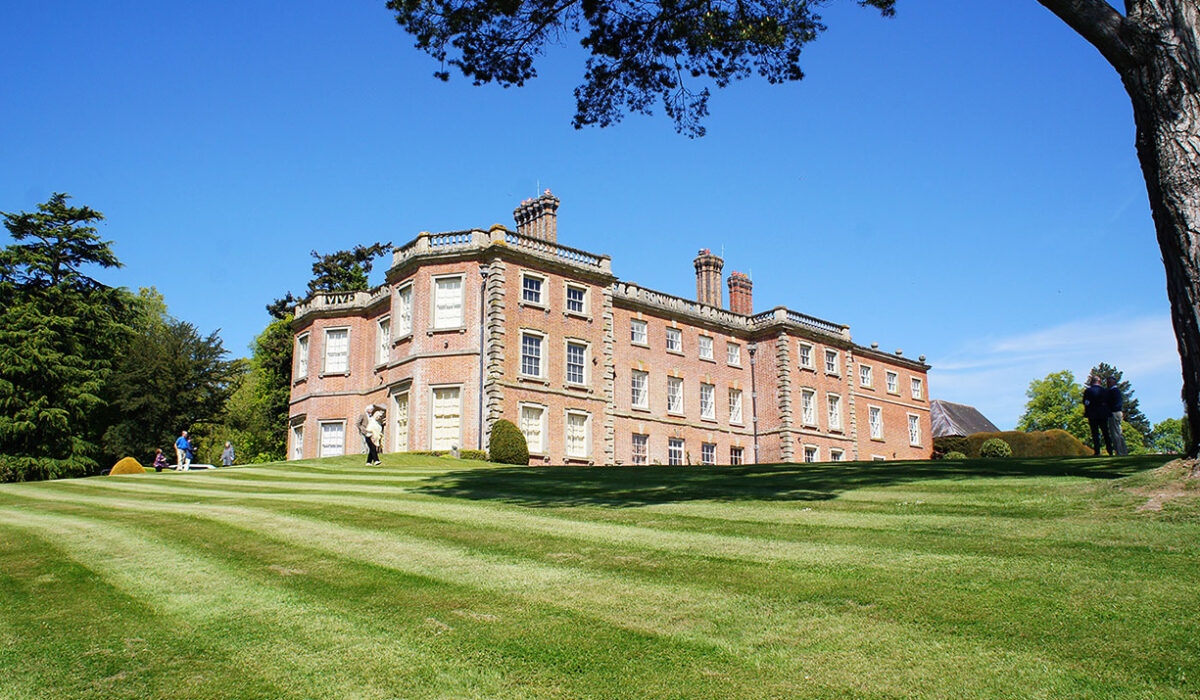
Downton Hall | Photo by Curt DiCamillo
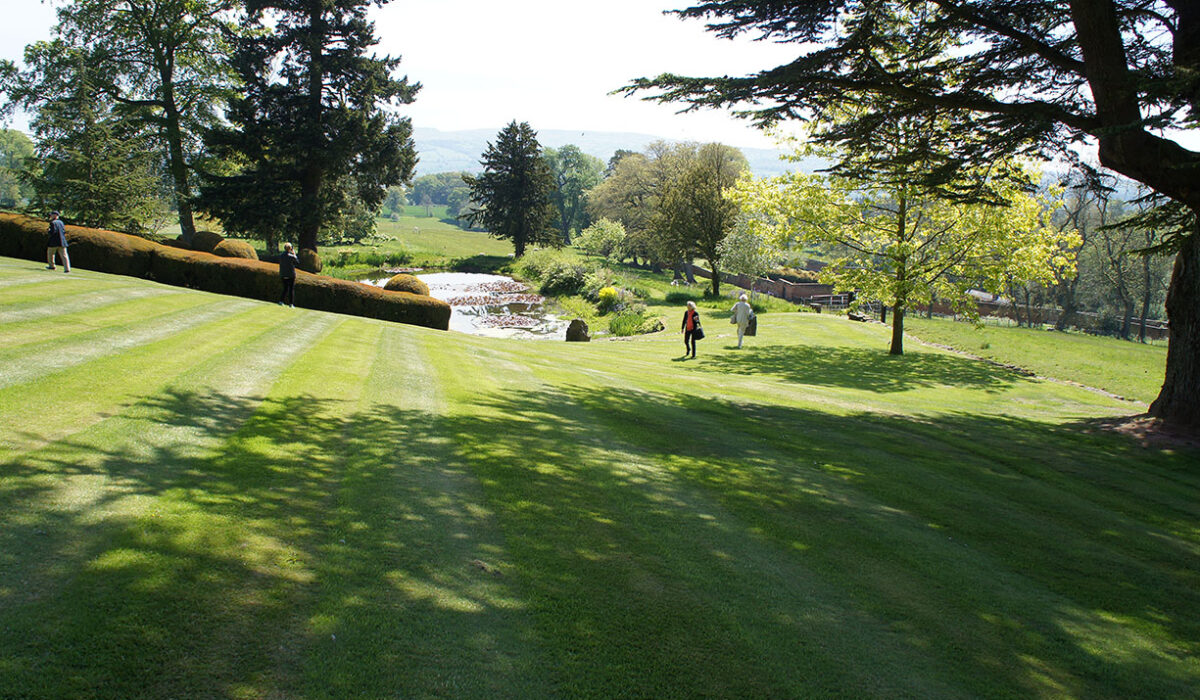
Downton Hall Garden | Photo by Curt DiCamillo
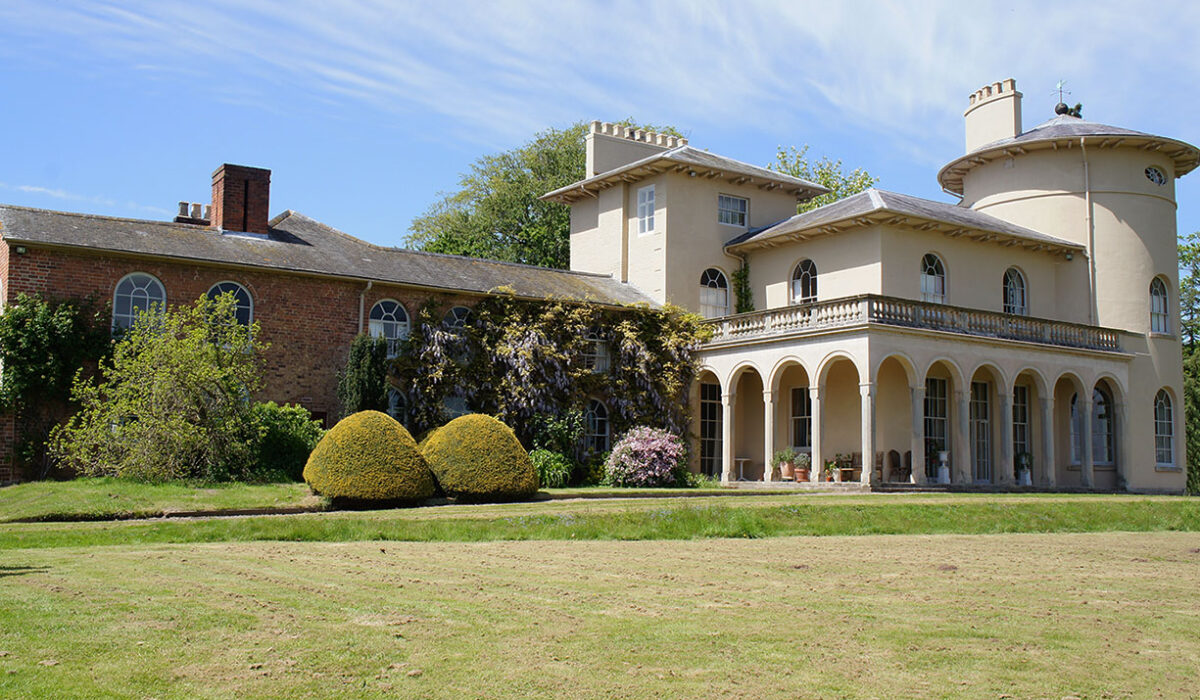
Cronkhill | Photo by Curt DiCamillo
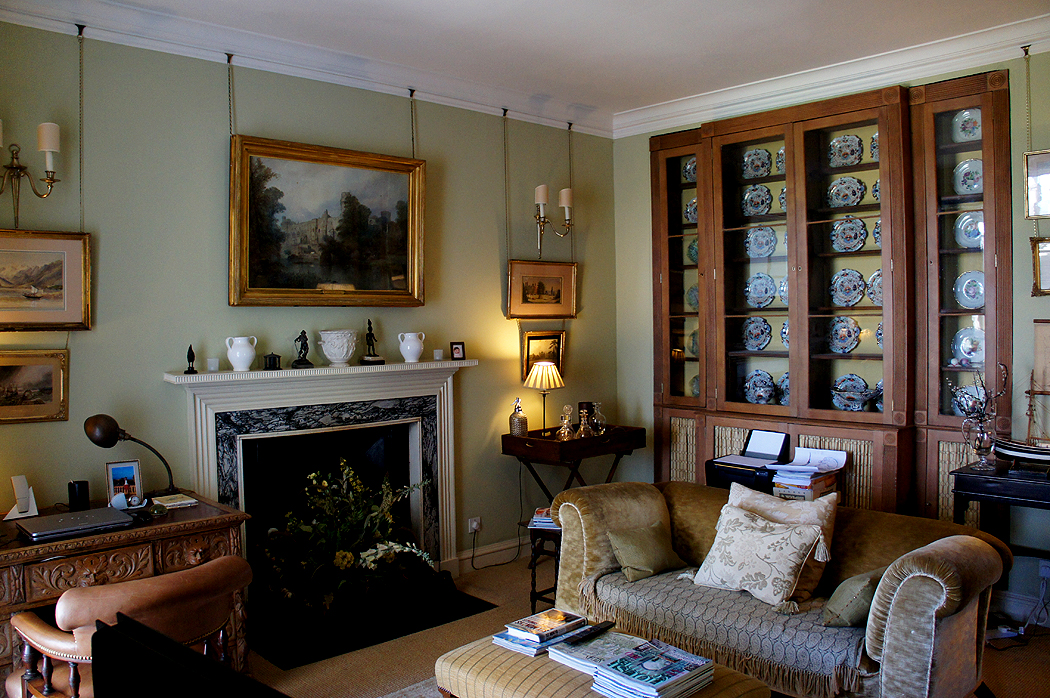
The Sitting Room, Cronkhill | Photo by Curt DiCamillo
Onslow Park, Whitton Hall & Loton Park
Completed in 2013, Onslow Park is one of the most distinguished country houses built in England in the early 21st century. Designed by Craig Hamilton, an architect who has also worked for The Prince of Wales, the Palladian style house was honored by the Georgian Group with their “Best New House in the Classical Tradition” award. Actually the third house on the site, the current Onslow Park was built for Claire and John Wingfield, whose family has been here since the 18th century. John and Claire opened every room of their perfectly proportioned classical house for us, ending with a cozy gathering of coffee and biscuits in the kitchen.
Tucked away, quite out of sight from the 21st century, Whitton Hall, the delightful family home of the Boscawen-Halliday family, is a rural delight from the early years of the 18th century. The red brick house looks out across gardens and a pool toward an undulating park populated by the family’s award-winning herd of Jersey cattle. After a tour of what must be one of the most intimate homes in Shropshire, we sat down to lunch with the family and dug into sumptuous food grown on the Boscawen-Halliday family estate.
Set on the very edge of Shropshire, where the River Severn cuts though on its journey from Wales, Loton Park is the seat of the Leightons, one of Shropshire’s most ancient families. Descended from Welsh princes, the family has been here since the 14th century, though their current house “only” dates to the 1670s. Here Sir Michael Leighton (Guy Ritchie’s stepfather) welcomed us with tea and nibbles, followed by a lively tour of his family’s ancestral, storied home.
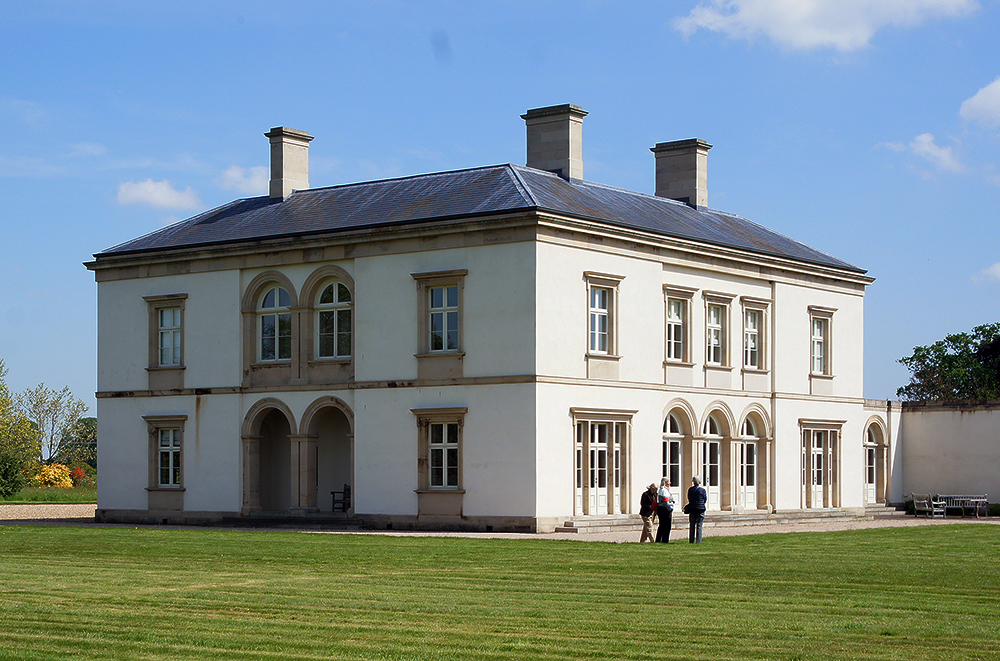
The Third Onslow Park | Photo by Curt DiCamillo
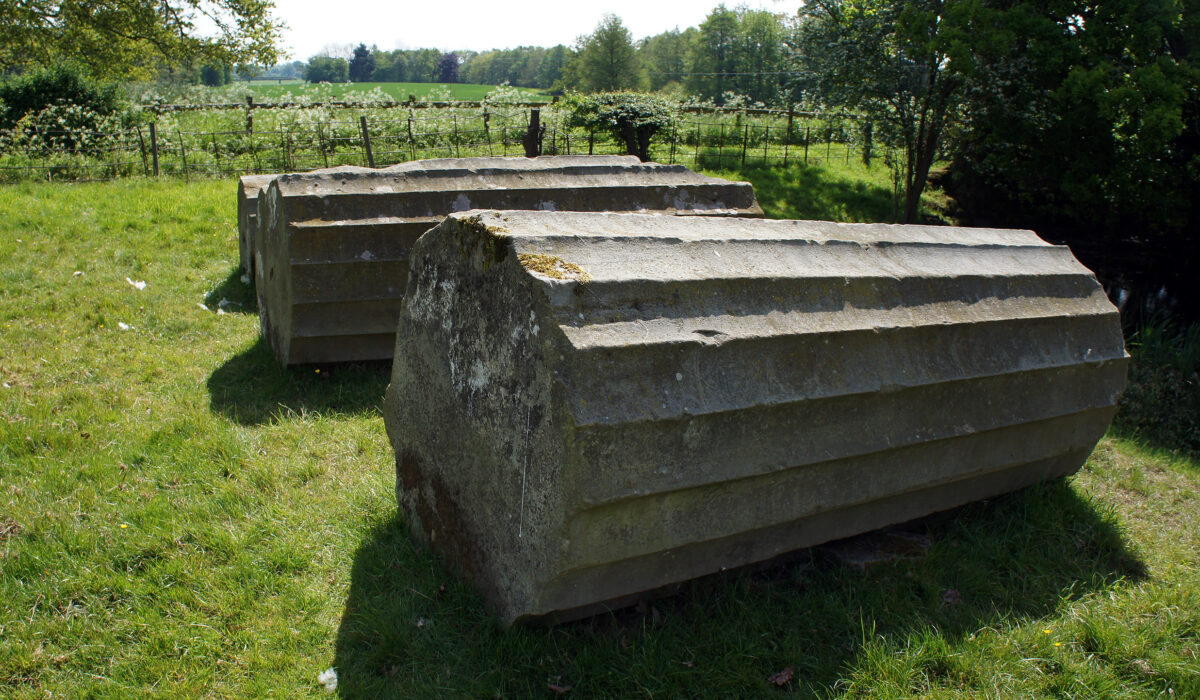
Columns from the Demolished First Onslow Park | Photo by Curt DiCamillo
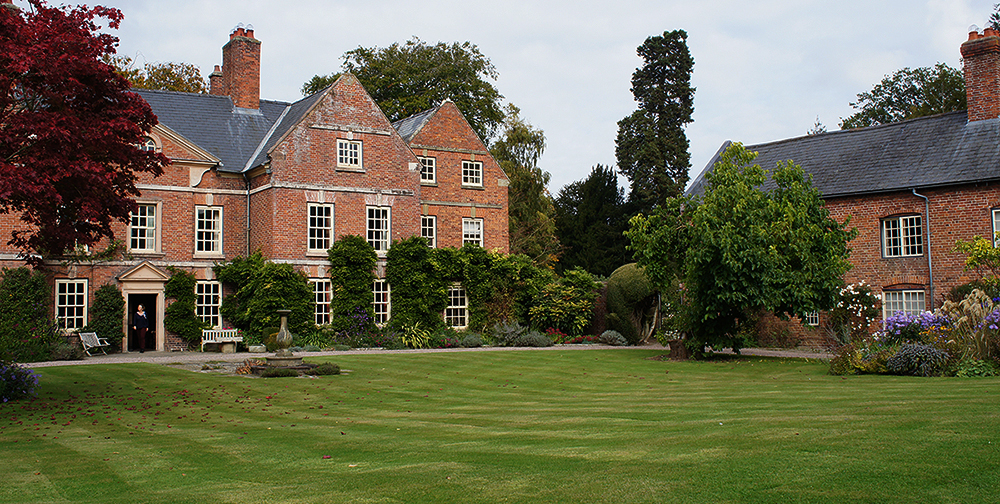
Whitton Hall | Photo by Curt DiCamillo
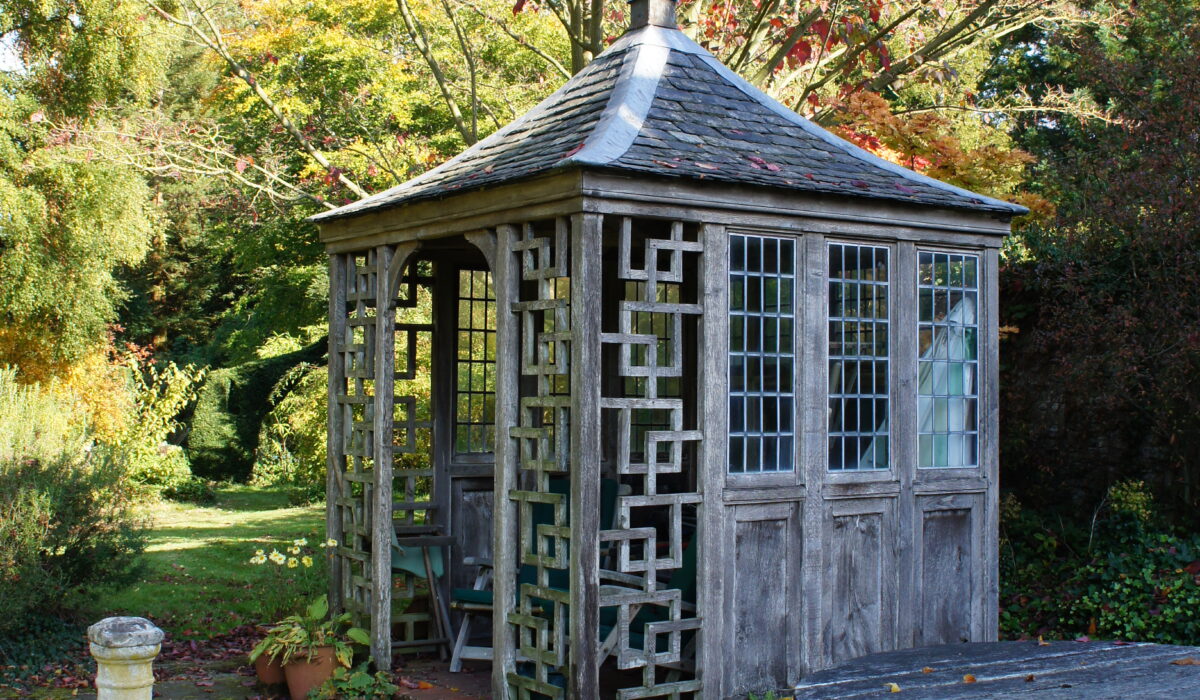
18th Century Chinoiserie Garden House, Whitton Hall | Photo by Curt DiCamillo
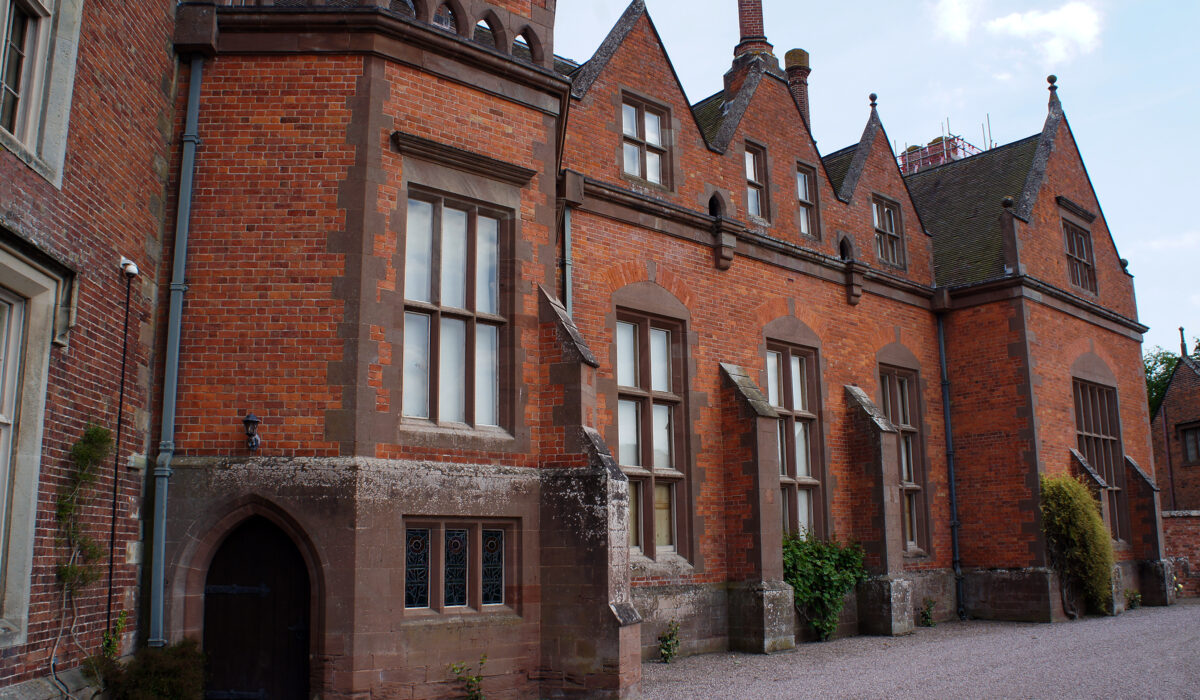
The Entrance Facade, Loton Park | Photo by Curt DiCamillo
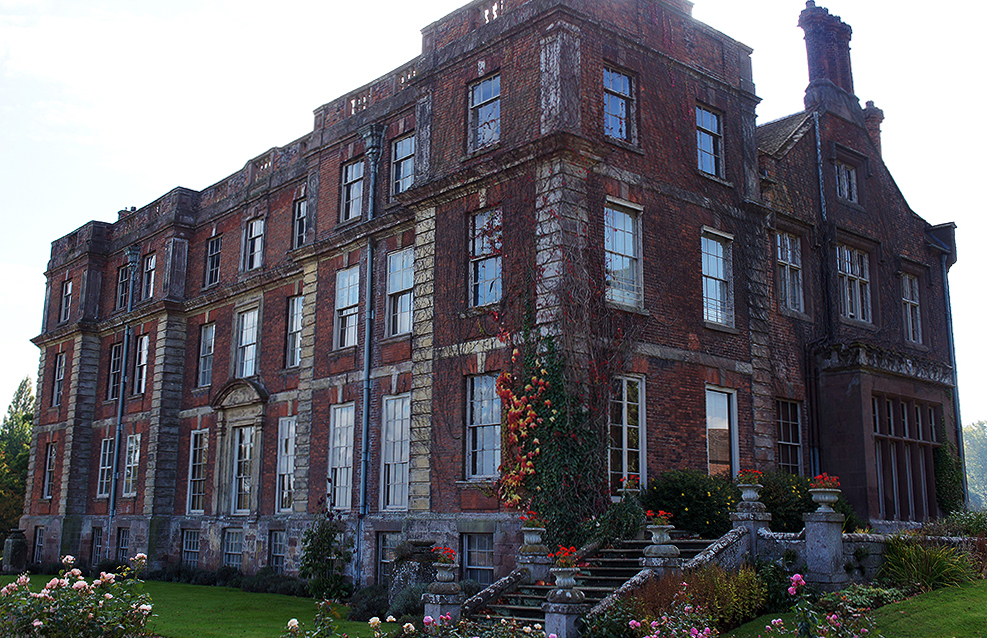
The Garden Facade, Loton Park | Photo by Curt DiCamillo
I can't imagine a more magical place on planet Earth than Shropshire.
The Library, Combermere Abbey | Photo by Curt DiCamillo
Rode Hall, the Wedgwood Museum & Combermere Abbey
Called a “substantial and elegant Georgian house” by the British architectural historian John Martin Robinson, Rode Hall remains today the private home of the Baker-Wilbraham family, who have been here since 1669. It was in the stable block that a member of the current generation, Amanda Baker-Wilbraham, hosted us for coffee, tea, and biscuits on a chipper May morning. Afterward we had a tour of the history-filled family home, with a particular focus on the important collection of English porcelain, which is especially strong in Chelsea, Bow, and Royal Worcester.
Gaye Blake-Roberts, director of the Wedgwood Museum, welcomed and hosted us for lunch at the Wedgwood Tea Room, where, of course, we ate off the best porcelain made by the company (the factory is across the street). After lunch Gaye gave us a private tour of the world’s finest collection of Wedgwood. Most famous for Jasperware, a unglazed stoneware with contrasting colors that has been made continuously by the firm since 1775, Wedgwood has always made a wide variety of hard and soft paste porcelain, sometimes of surprising designs, the best of which we saw! After the tour we had retail therapy time in the shop. Of course.
Sarah Callander Beckett gave us a tour of Combermere Abbey, her newly-glistening family home. The restoration of Combermere is one of the great country house rescue stories of the 20th century (it won the Historic Houses Association/Sotheby’s Restoration Award of 2016). Originally a monastic site (a Cistercian abbey had been founded here in 1133), the buildings were converted into a private house in the 16th century; by the end of the 20th century the house was in severe decay (there were literally trees growing in some of the rooms). It was to this setting that Sarah Callander Beckett came when she inherited Combermere Abbey in 1992. Her enthusiasm and hard work permeates every nook and cranny of Combermere (a house, it should be noted, that almost nobody thought could be saved). Sarah has also put the estate on a firm financial footing by converting outbuildings into holiday rentals and developing the walled garden into a wedding venue, all which she will soon be passing on to her son Peregrine, the next generation to carry this magical place forward.
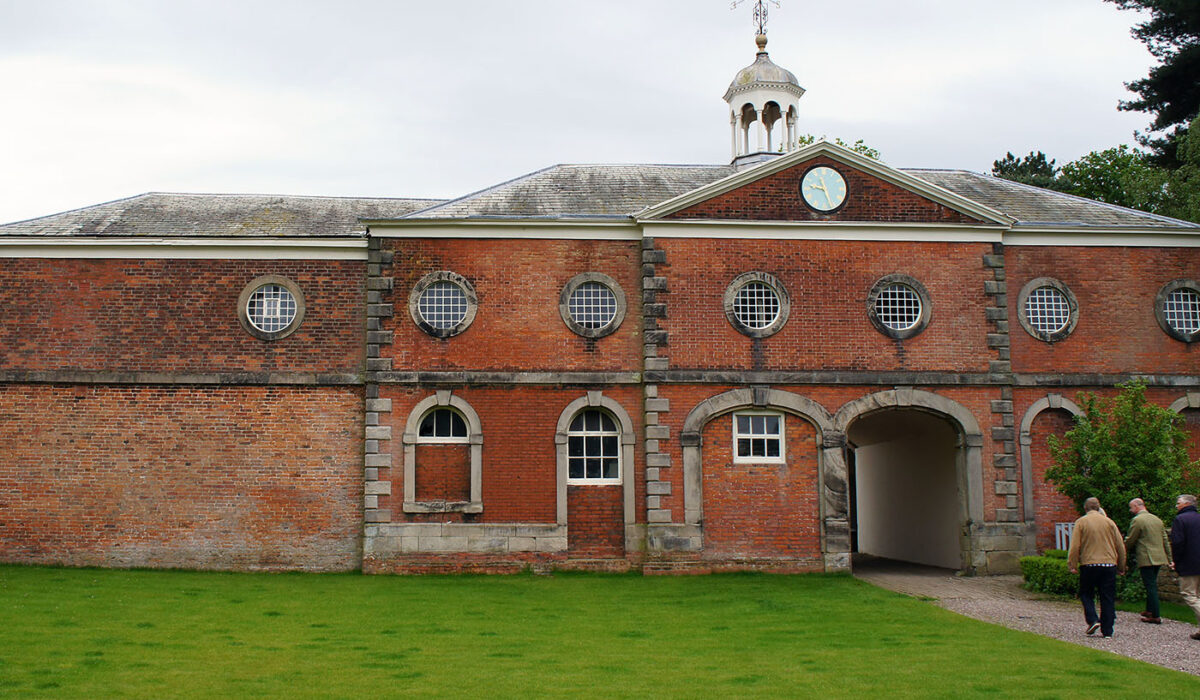
The Stables, Rode Hall | Photo by Curt DiCamillo
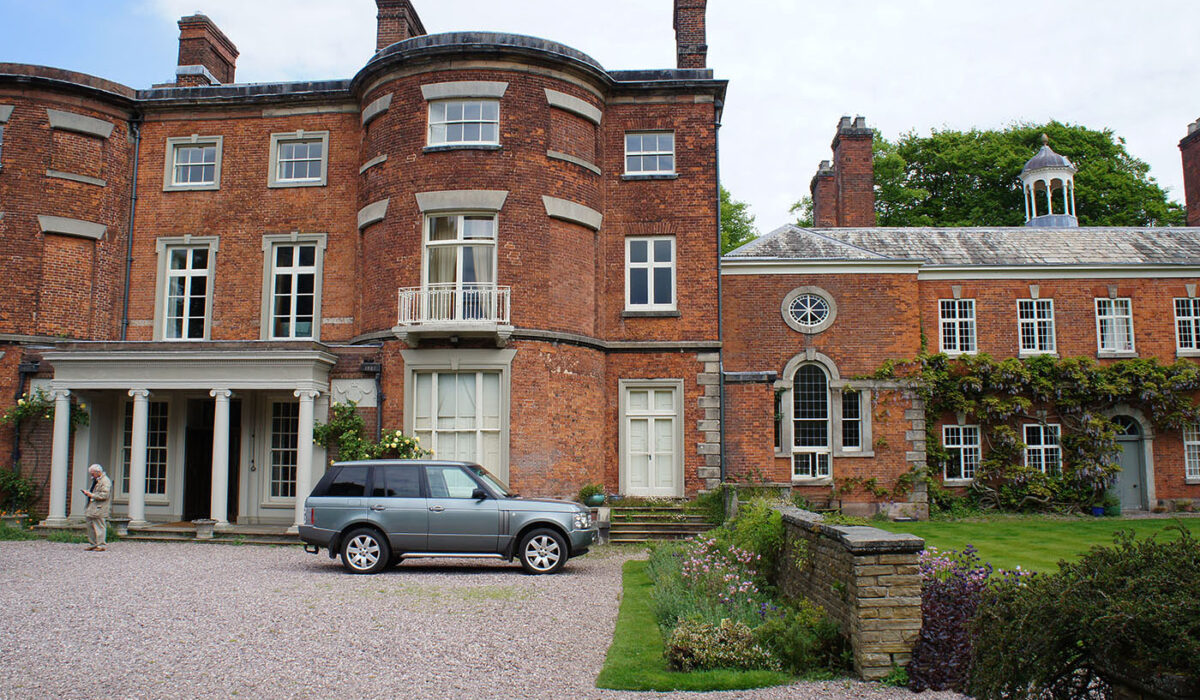
Rode Hall | Photo by Curt DiCamillo
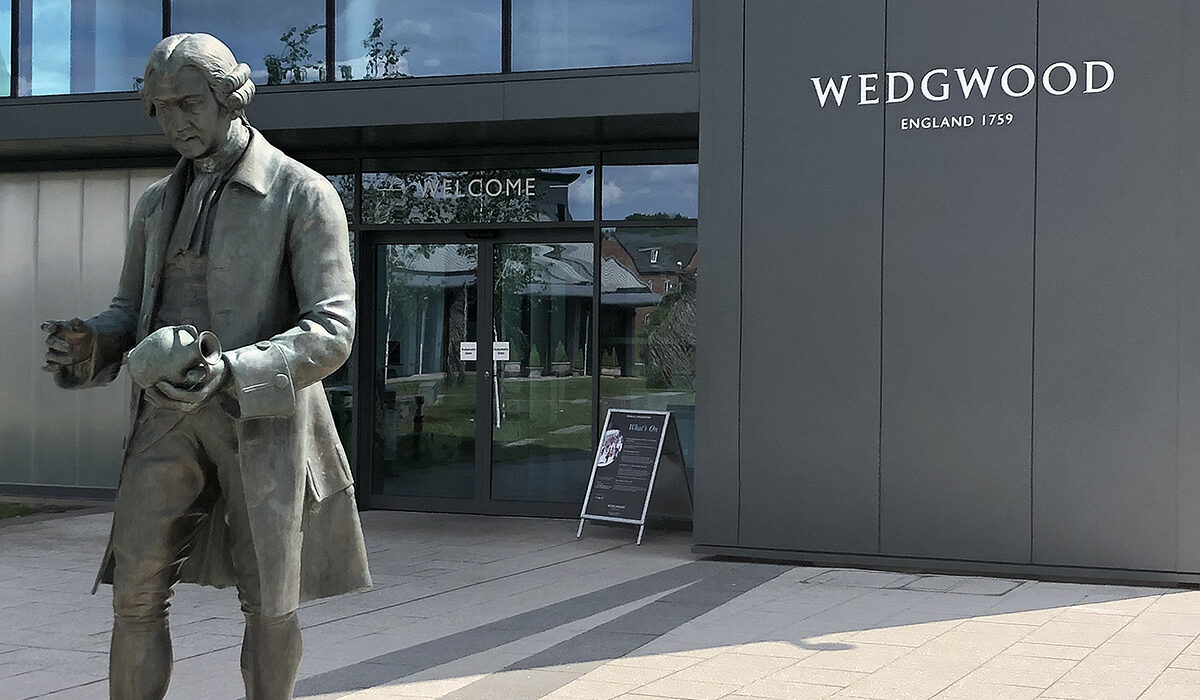
The Wedgwood Museum | Photo by Curt DiCamillo
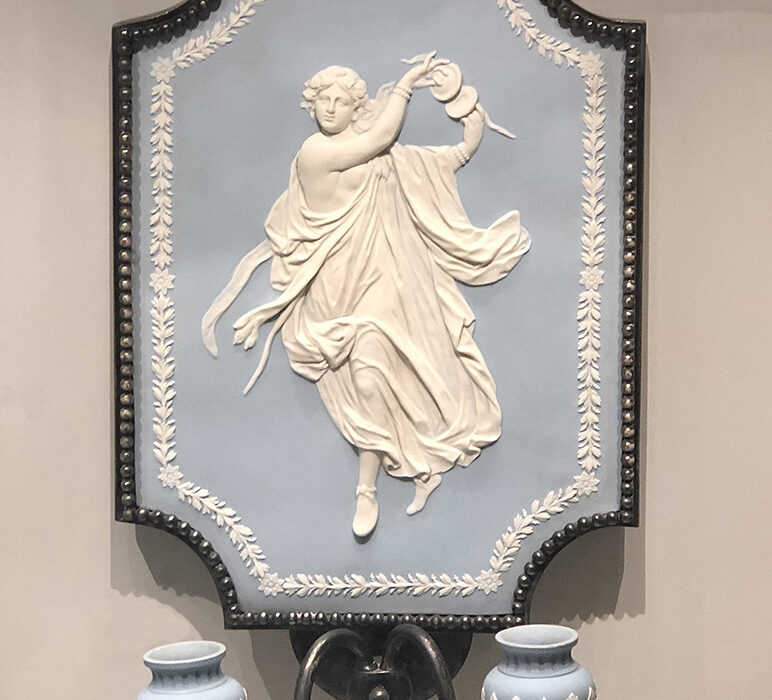
The Wedgwood Museum | Photo by Curt DiCamillo
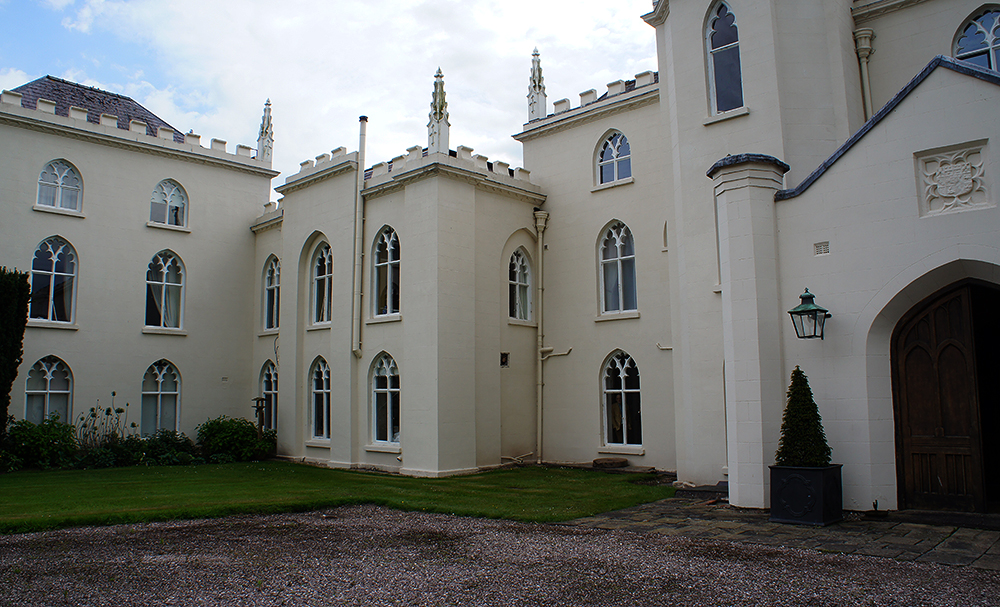
The Entrance Facade, Combermere Abbey | Photo by Curt DiCamillo
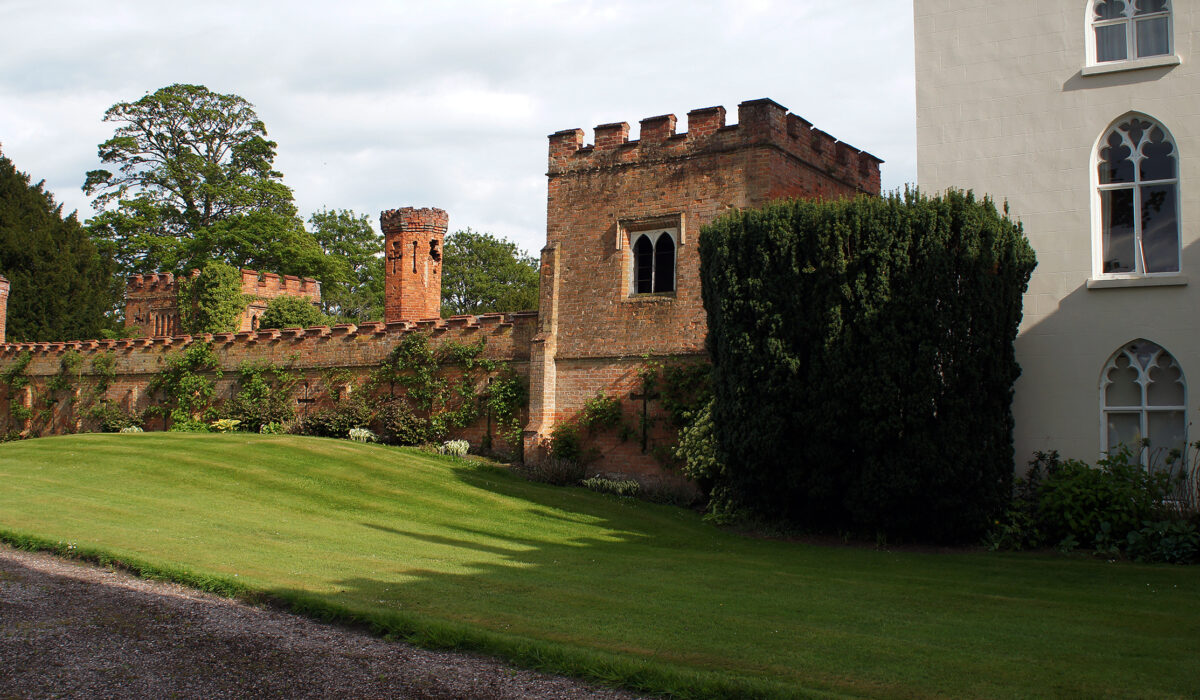
Combermere Abbey | Photo by Curt DiCamillo
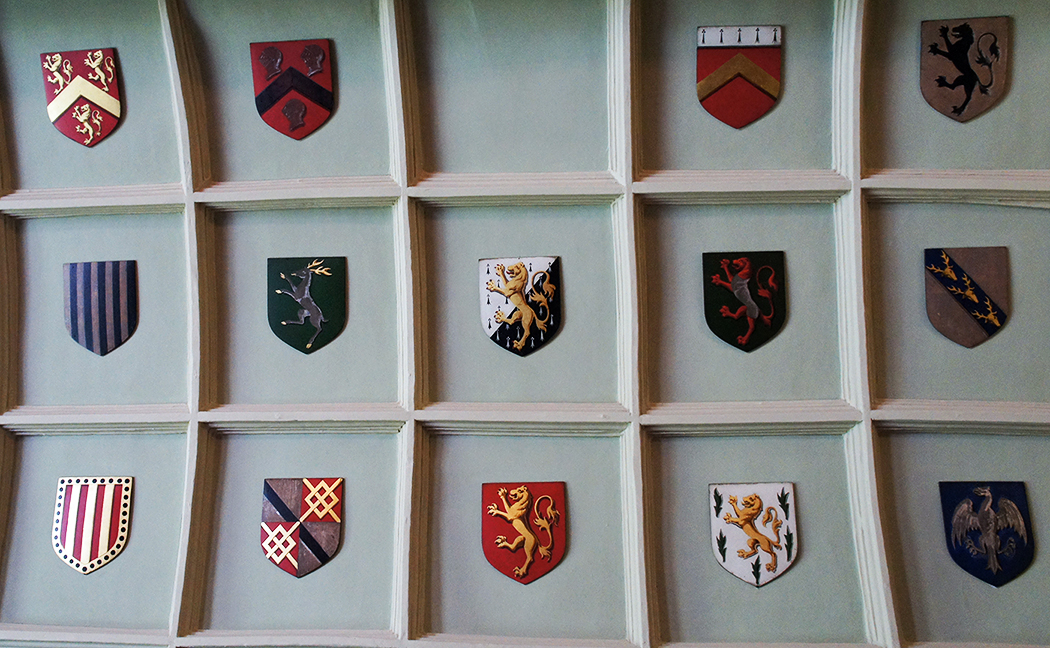
The Library Ceiling, Combermere Abbey | Photo by Curt DiCamillo
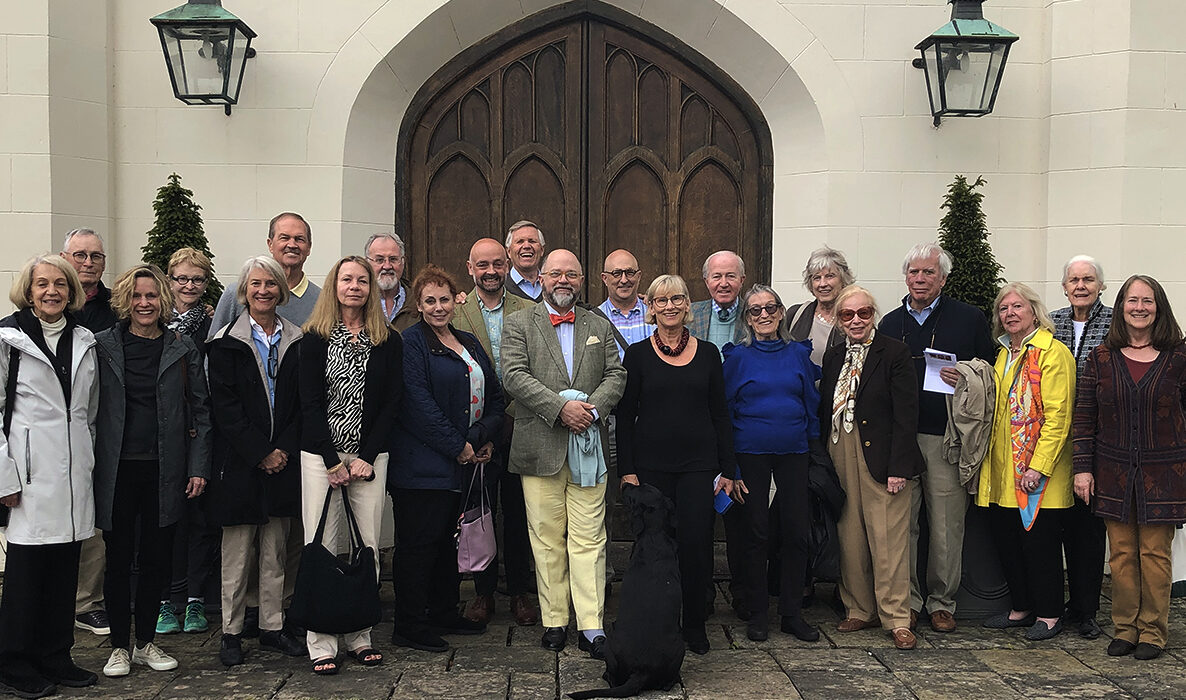
Our happy group with Sarah Callendar Beckett (middle right, with dog) | Photo by Pixie Robinson
Pitchford Hall, Shrewsbury & Willey Park
The charming young owners of Pitchford Hall, Rowena Colthurst and James Nason, and their wonderful children, hosted us at this most English of historic houses. Known as “the queen of Shropshire’s black and white houses,” Pitchford is a dreamy half-timbered mansion that was begun by the Ottley family in the 15th century. Rowena’s family, who had been seated here for many years, were forced to sell Pitchford in the 1980s, after suffering financial reverses. The new owners never lived in the house and allowed it to slip into decay. In the early 21st century Rowena and her husband James were able to repurchase the empty, leaky, and rundown house. They have been carefully restoring it ever since.
A historic market town whose town center has a largely unaltered Medieval street plan, Shrewsbury has over 660 listed buildings, including several examples of timber framing from the 15th and 16th centuries. Highlights of the town include Shrewsbury Castle, a red sandstone fortification, and Shrewsbury Abbey, a former Benedictine monastery, which were founded in 1074 and 1083, respectively, by the Norman Earl of Shrewsbury, Roger de Montgomery. We were given an amazing walking tour of all this and more by our very own Gareth Williams, after which everyone had lunch and time on their own to enjoy Shropshire’s lovely, history-filled county seat.
At the end of a drive that lasts for miles, the sublime setting of Willey Park, one of England’s most secret great houses, is revealed. Soaring high above a valley, the house is masterfully positioned on a terrace above a chain of lakes in a vast park that hides it from every trace of the outside world. The private family home of the Forester family (their name comes from the family’s ancient land holdings in nearby Wrekin Forest), Willey was the masterpiece of its architect, Lewis Wyatt, who designed the house in a very grand Palladian-Neoclassical style. One enters Willey through the great hall, a galleried basilica redolent of ancient Rome, with mouth agape. This magnificent space is of enormous proportions: 40 feet long by 30 feet wide, with a 28-foot-tall ceiling that is top-lit by a segmental vault, all supported by yellow Siena scagliola Corinthian columns. There are few spaces like it anywhere in Britain, outside of a London club. Here Lord Forester gave us a tour of his family’s ancestral home that ended with tea and cookies in the sun-drenched orangery.
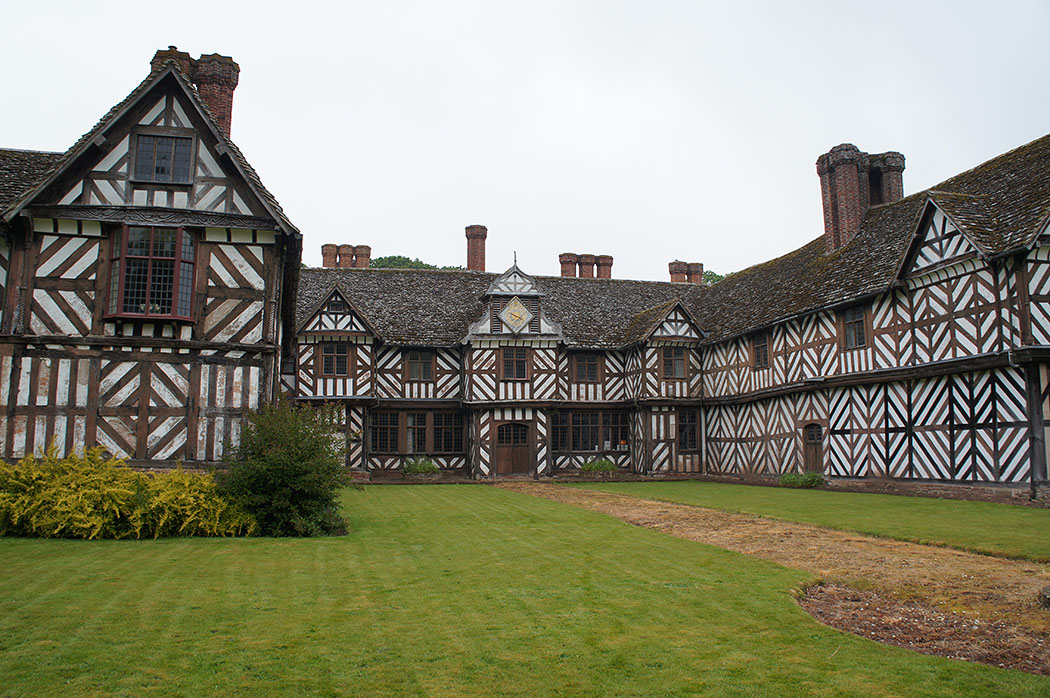
Pitchford Hall | Photo by Curt DiCamillo
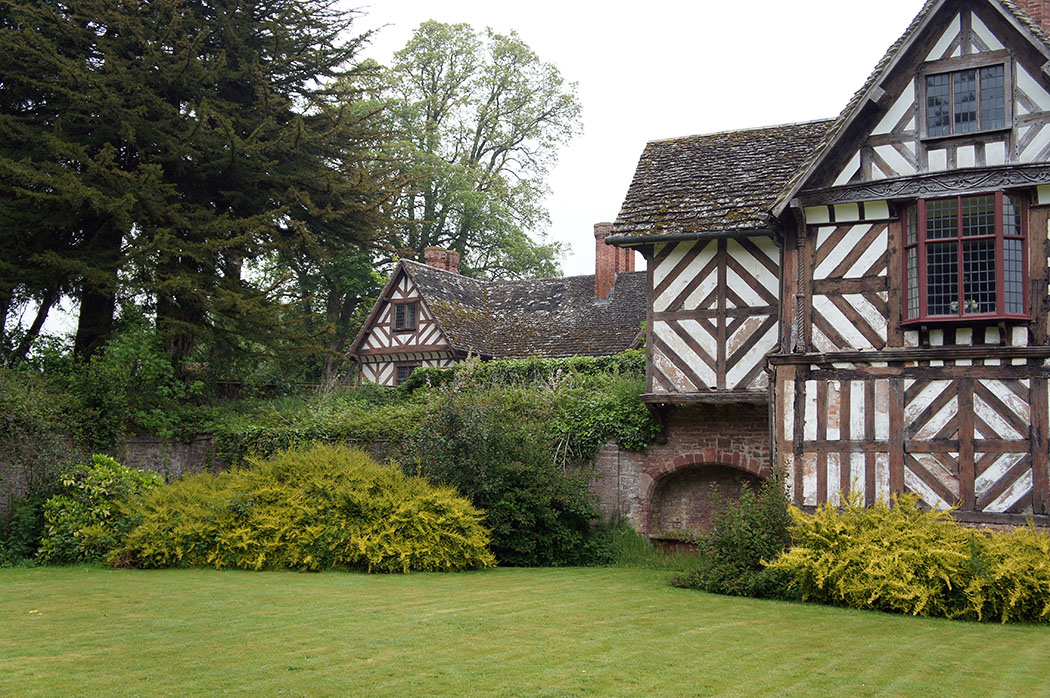
Pitchford Hall | Photo by Curt DiCamillo
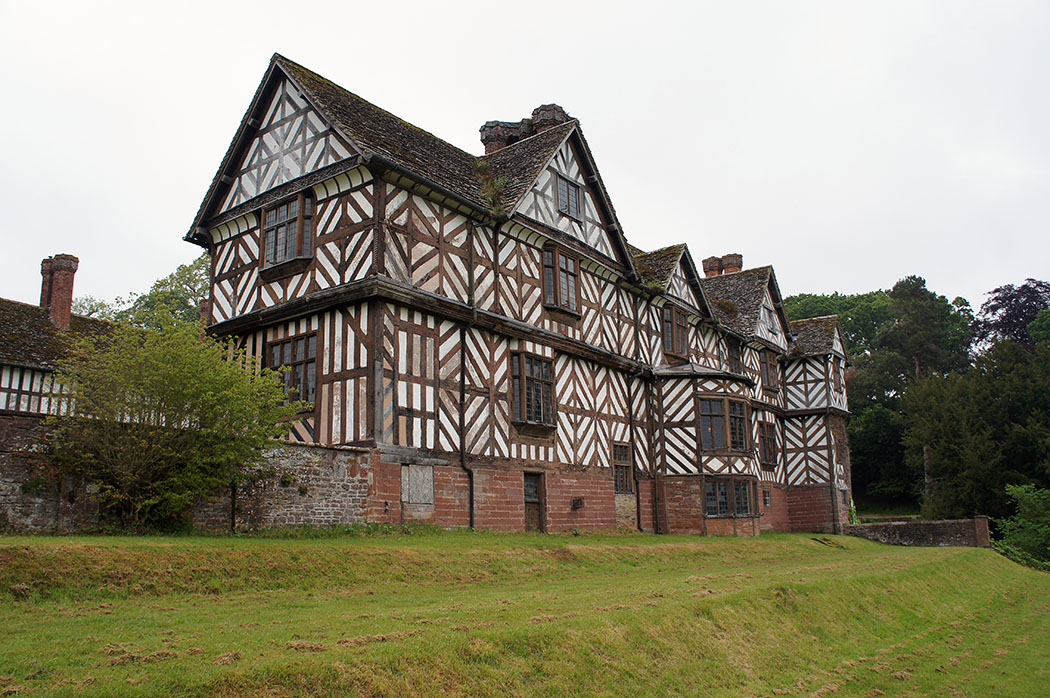
Pitchford Hall | Photo by Curt DiCamillo
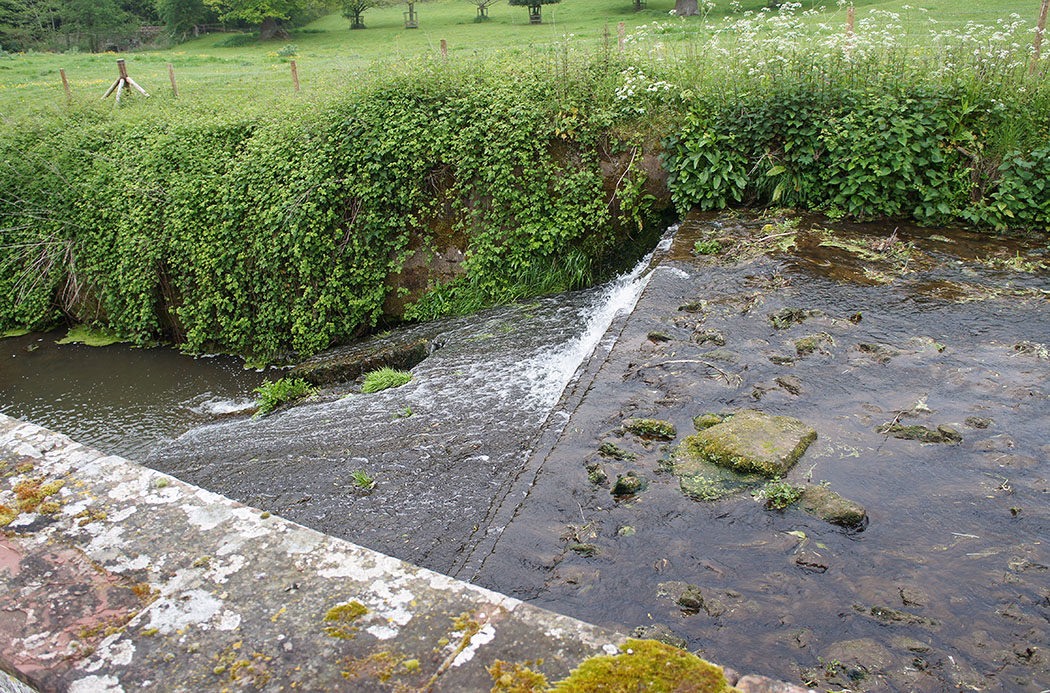
Rowe Brook, Pitchford Hall | Photo by Curt DiCamillo
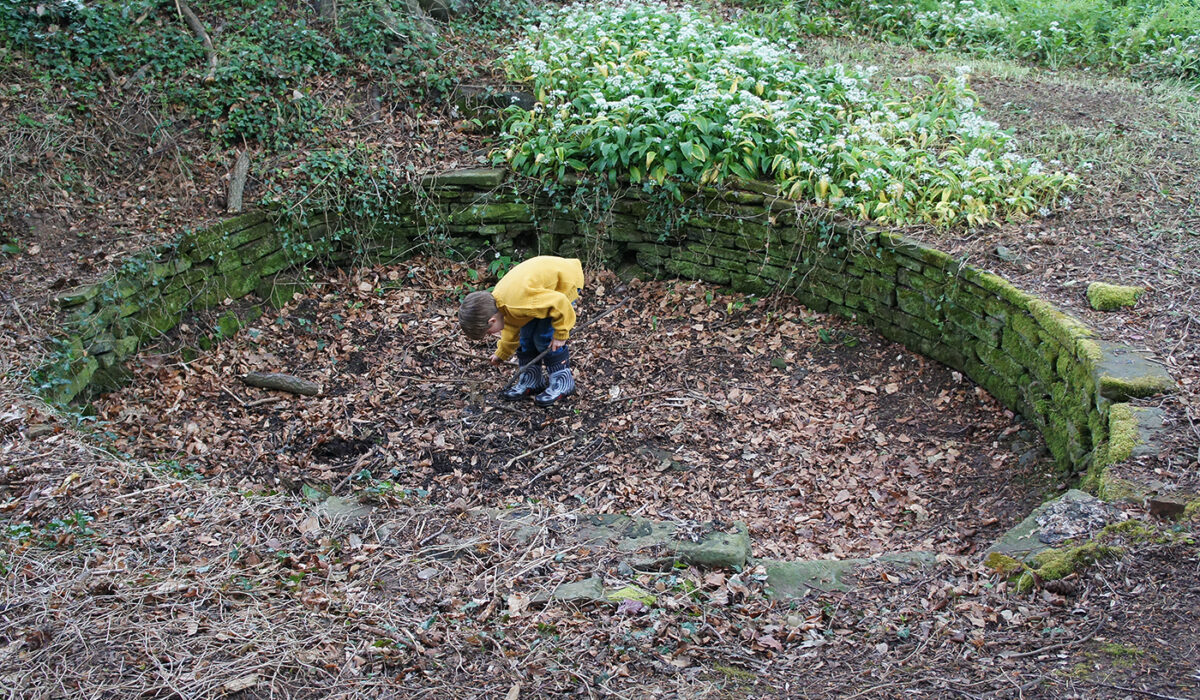
The Pitch Pit (from whence the house acquired its name!), Pitchford Hall | Photo by Curt DiCamillo
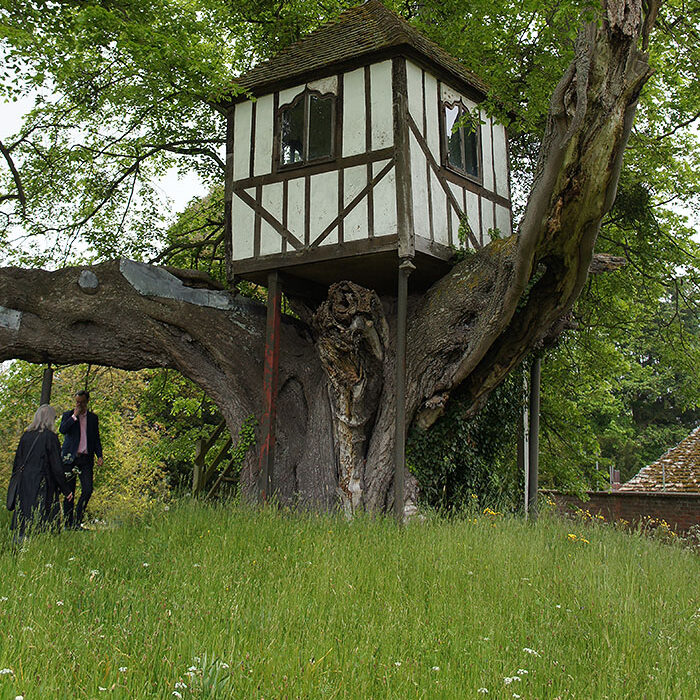
The World's Oldest Tree House, Pitchford Hall | Photo by Curt DiCamillo
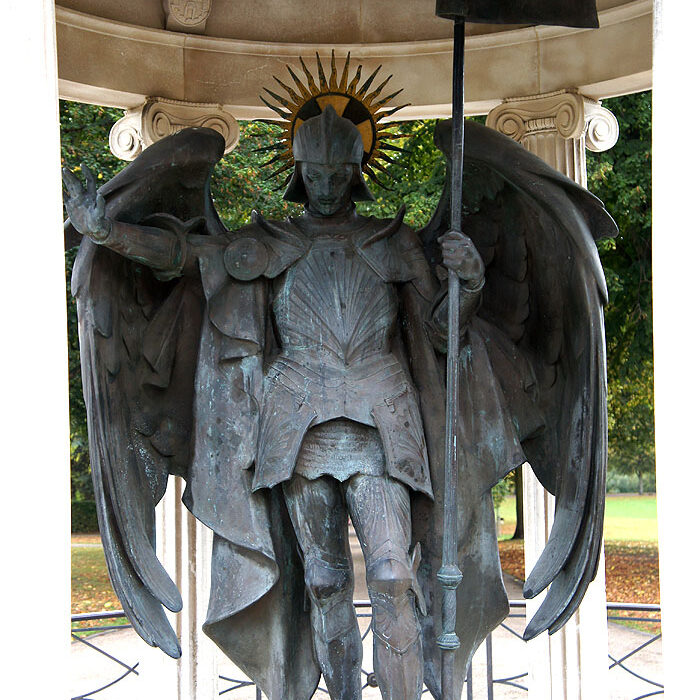
The Shrewsbury War Memorial | Photo by Curt DiCamillo
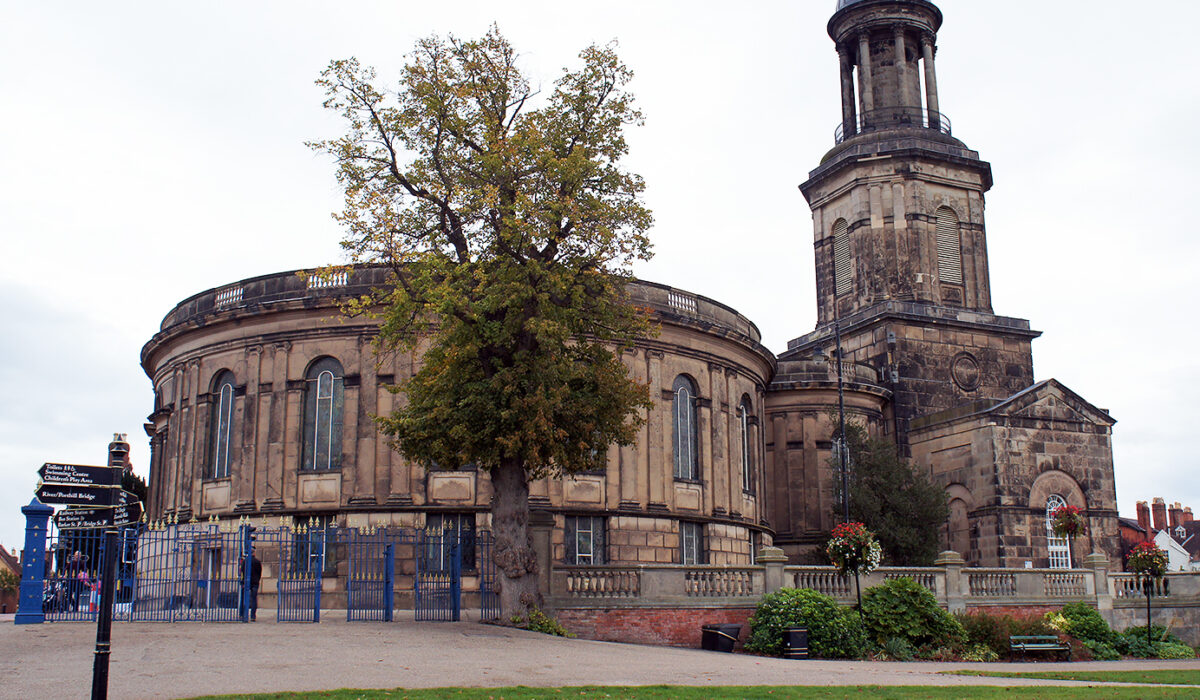
St. Chad's Church, Shrewsbury | Photo by Curt DiCamillo
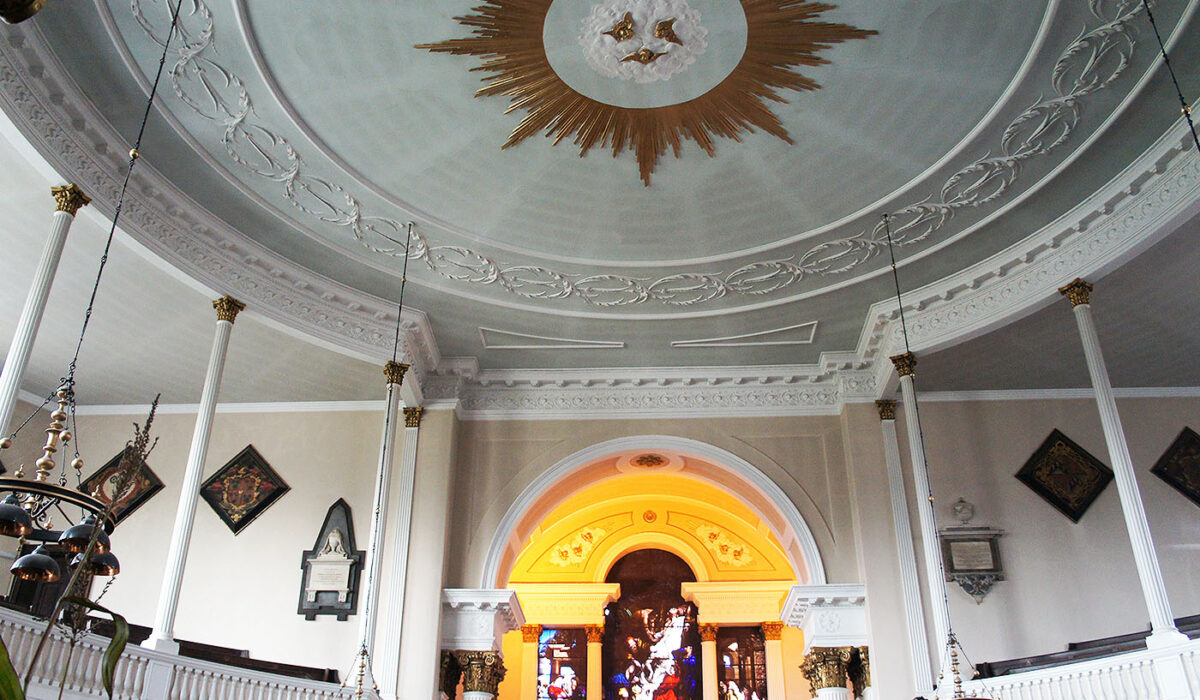
Interior of St. Chad's Church, Shrewsbury | Photo by Curt DiCamillo
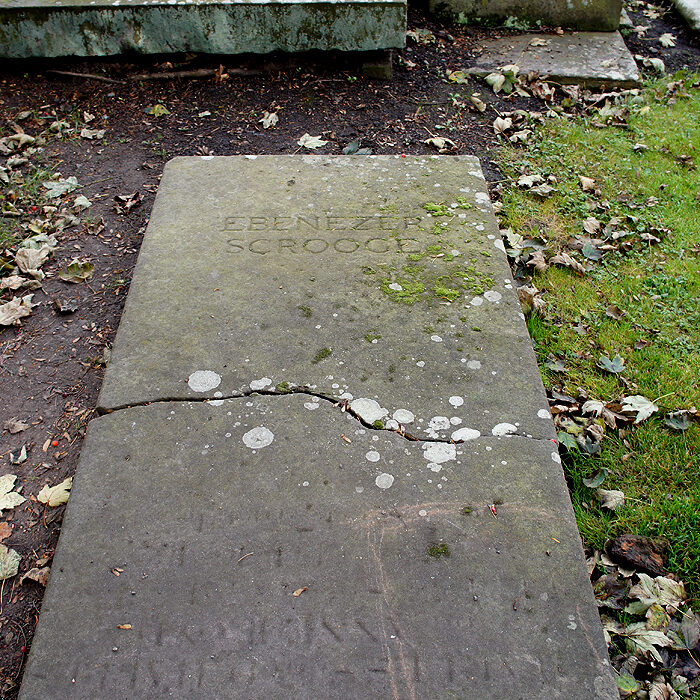
Gravestone of Ebenezer Scrooge, St. Chad's Church, Shrewsbury | Photo by Curt DiCamillo
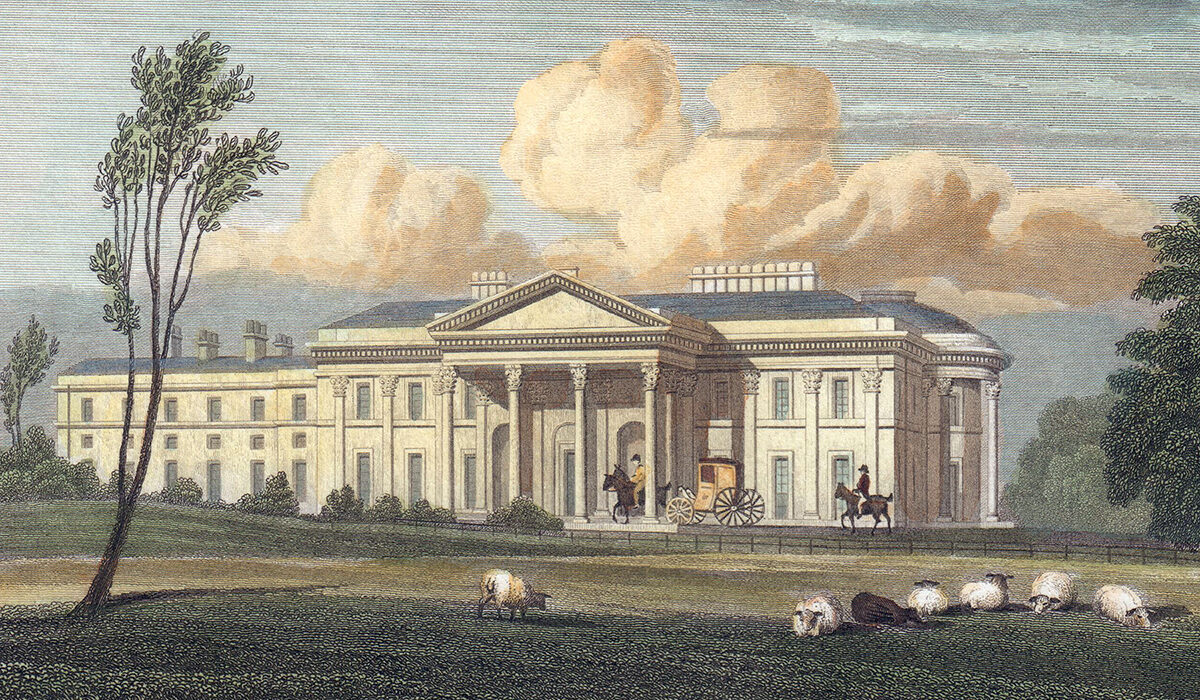
Willey Park from an early 19th century hand-colored engraving in the collection of The DiCamillo Companion
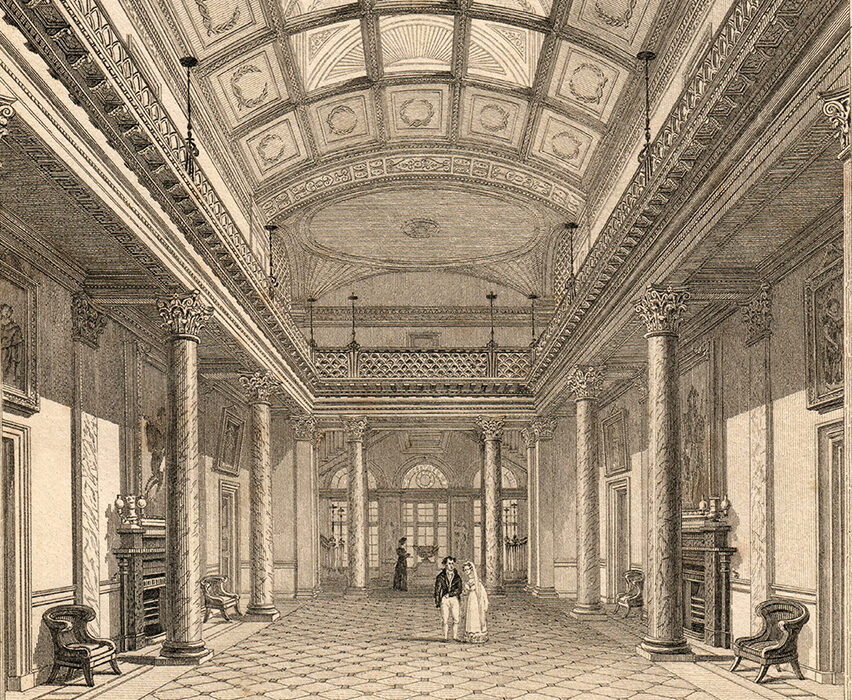
The Great Hall, Willey Park, from an 1826 engraving in the collection of The DiCamillo Companion
The visits to so many private houses and the opportunity to meet their owners was the highlight of the tour.
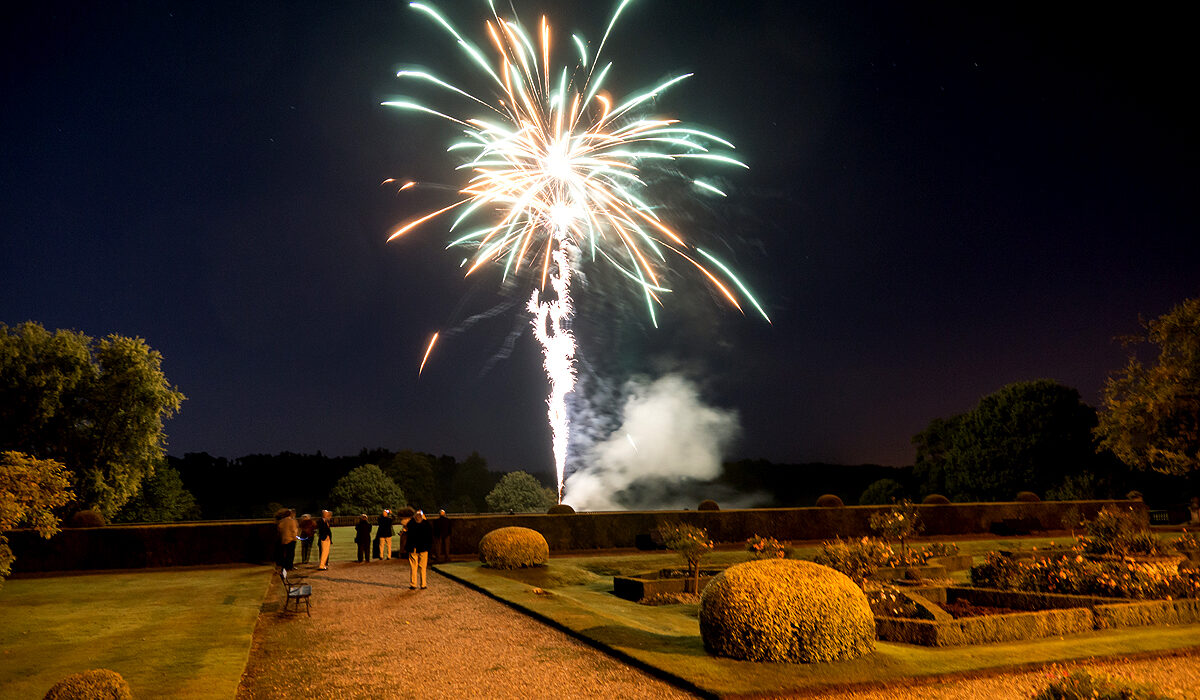
Fireworks at Weston Park | Photo by Louis Freeman
